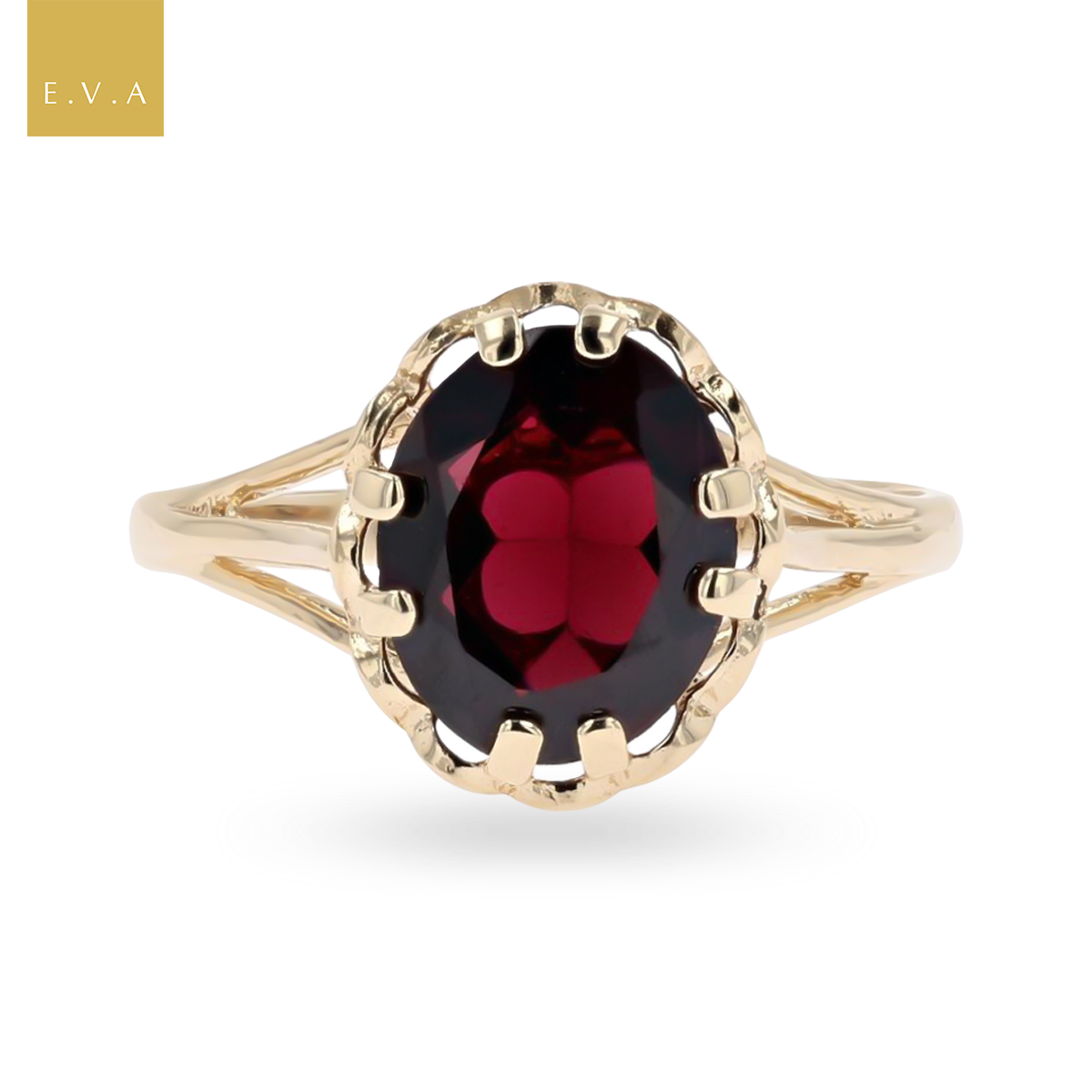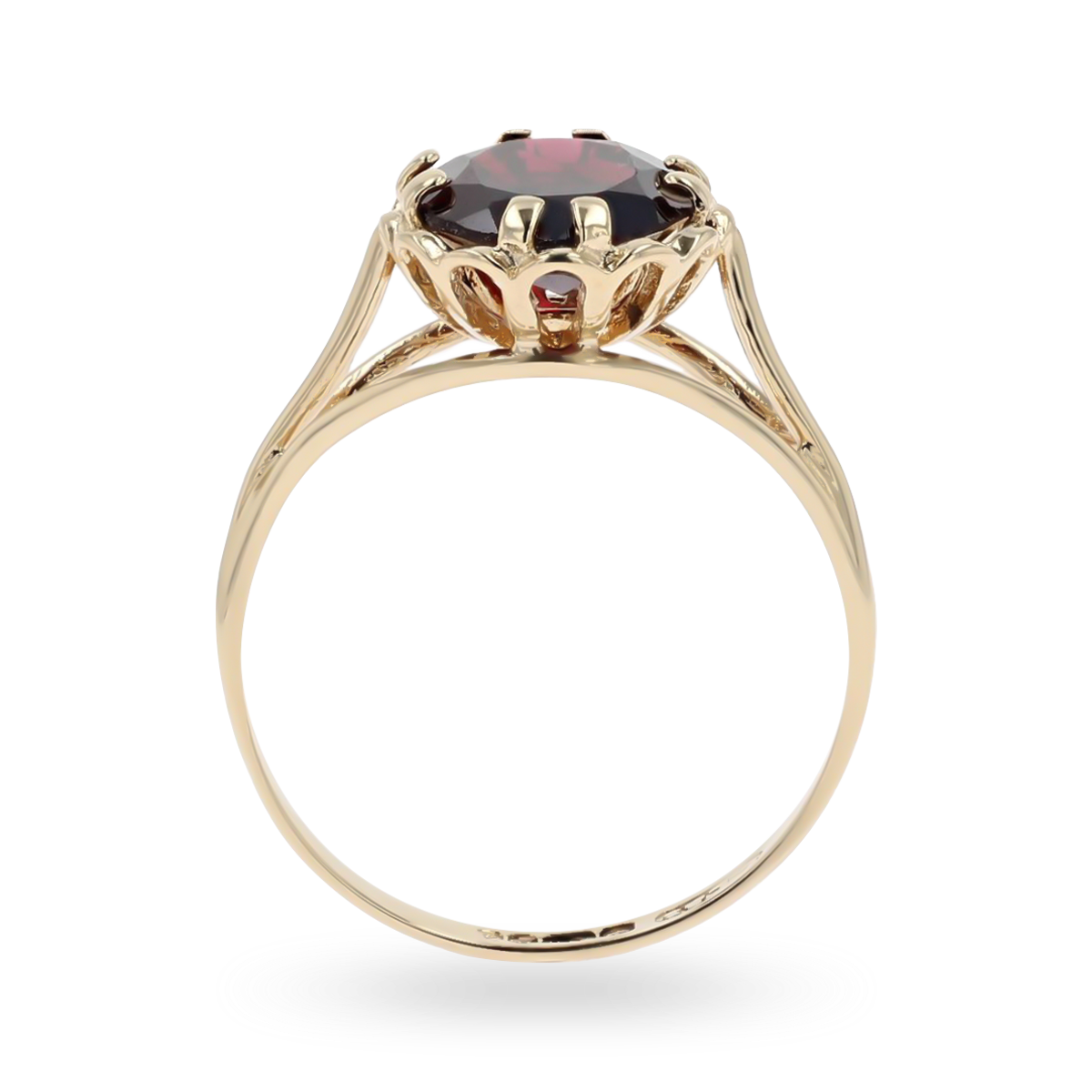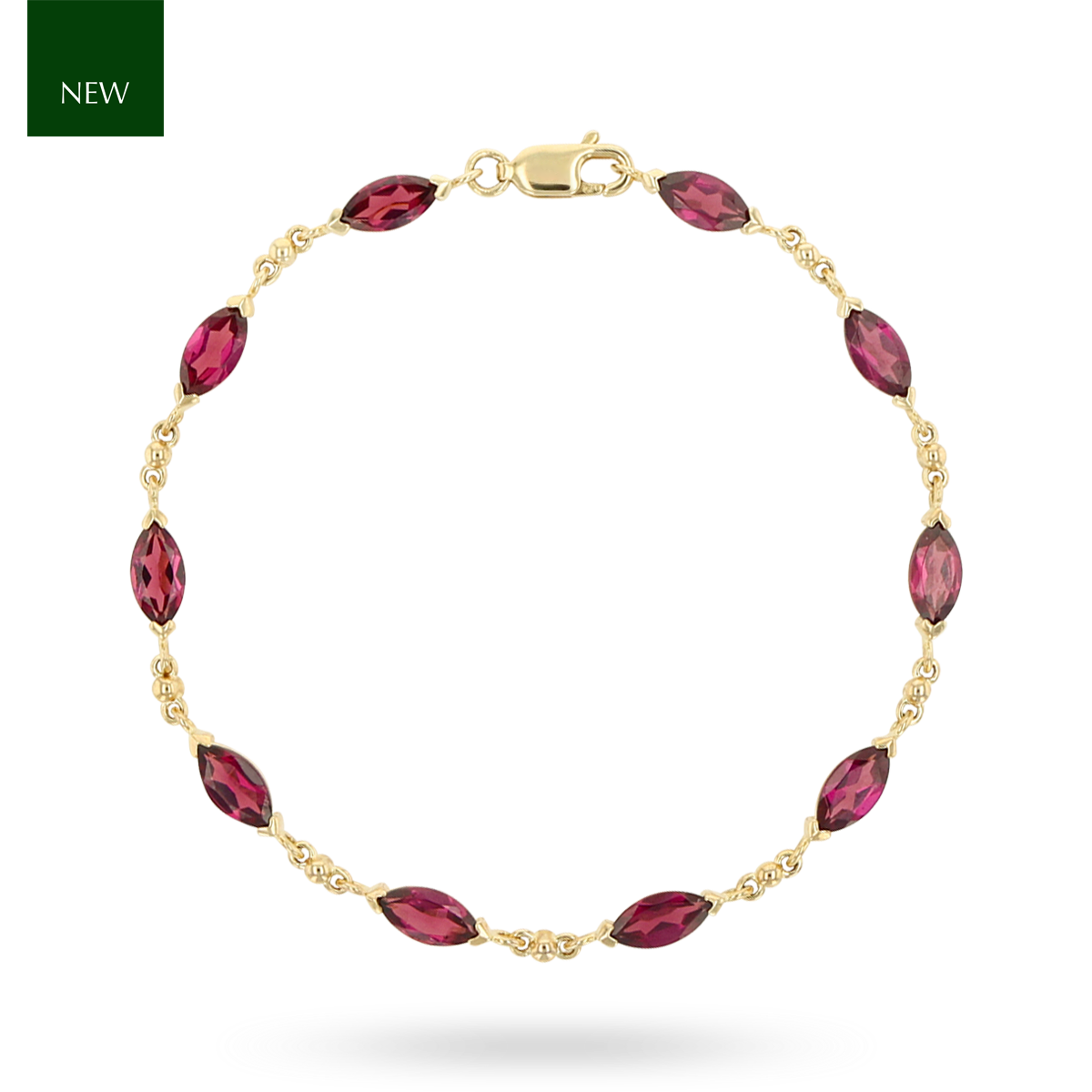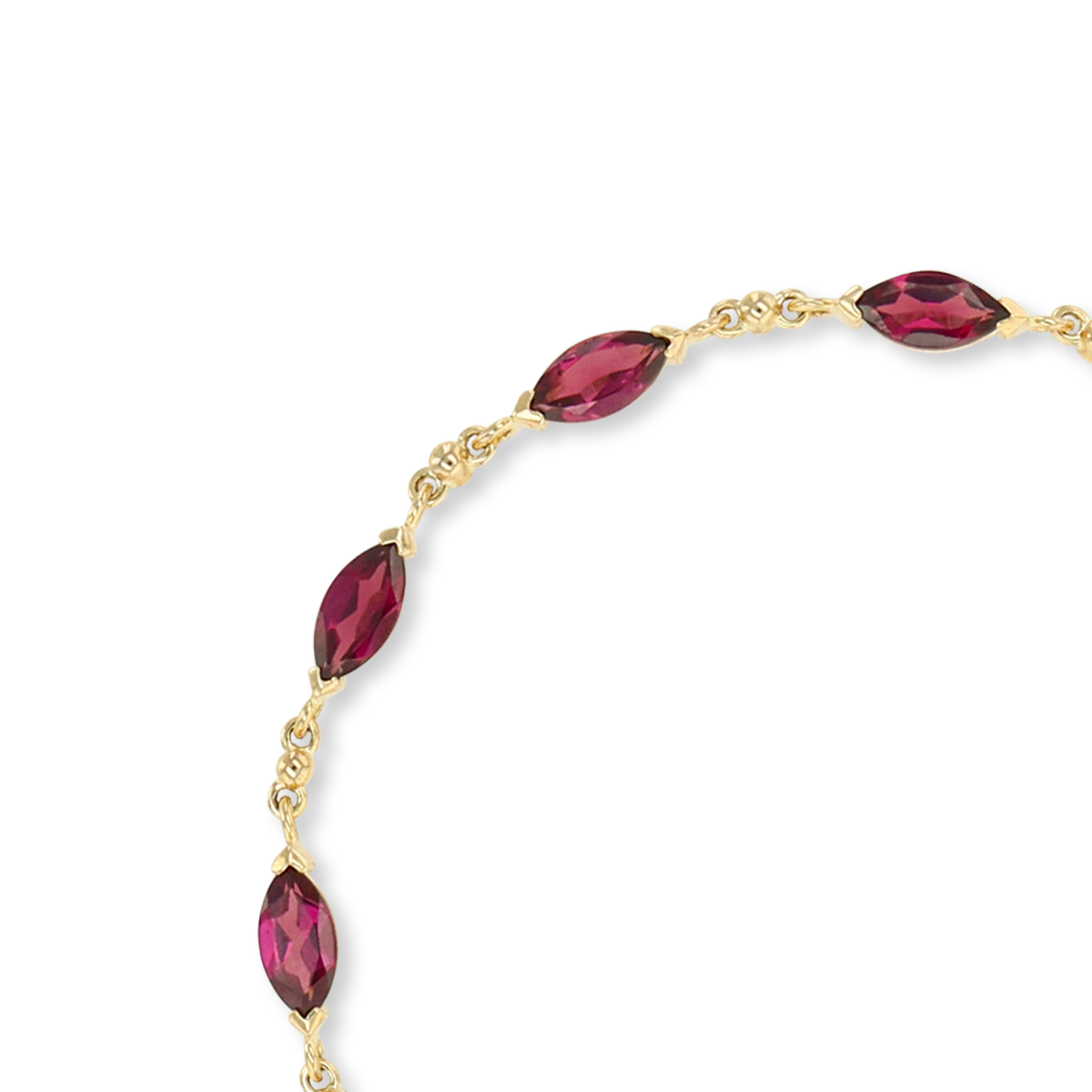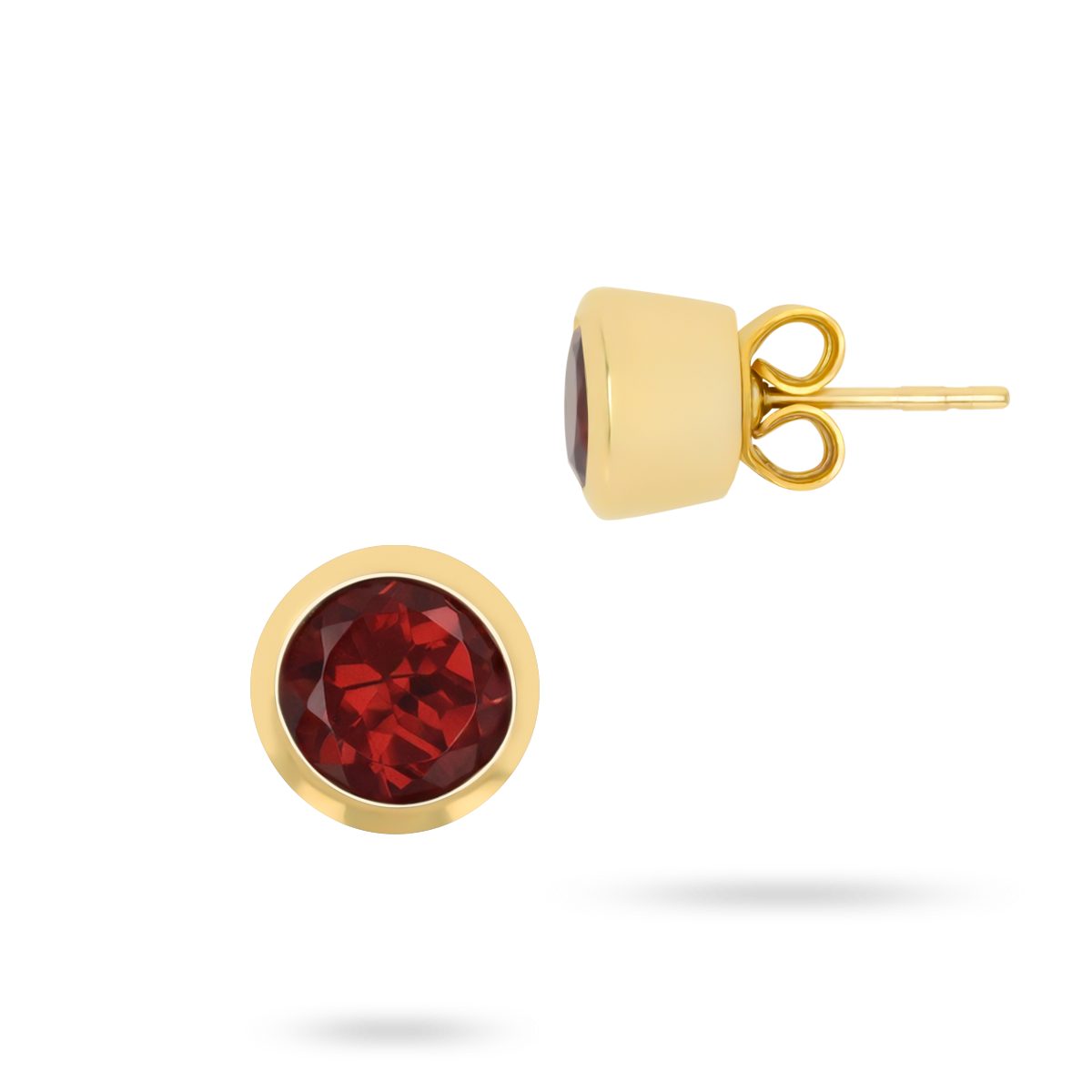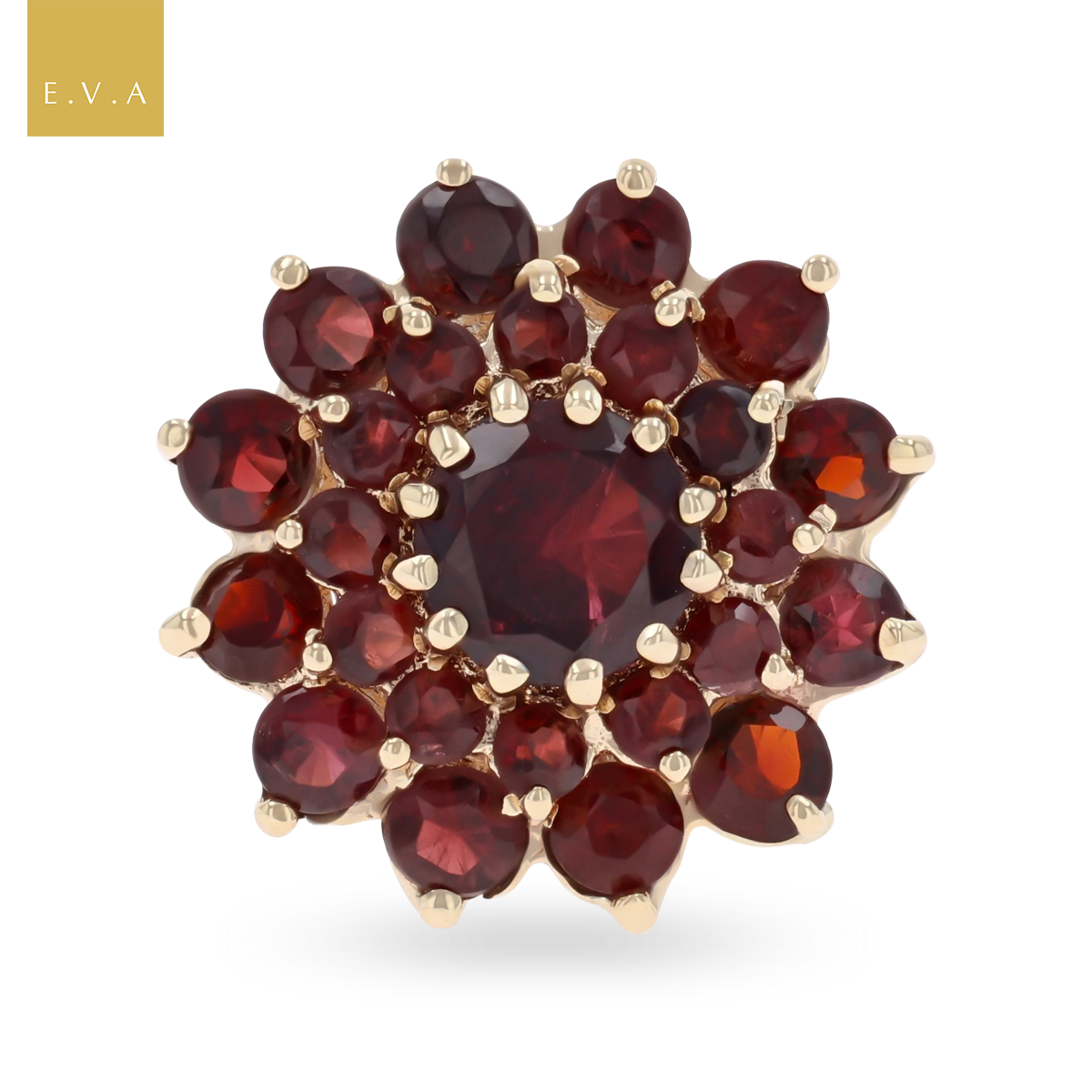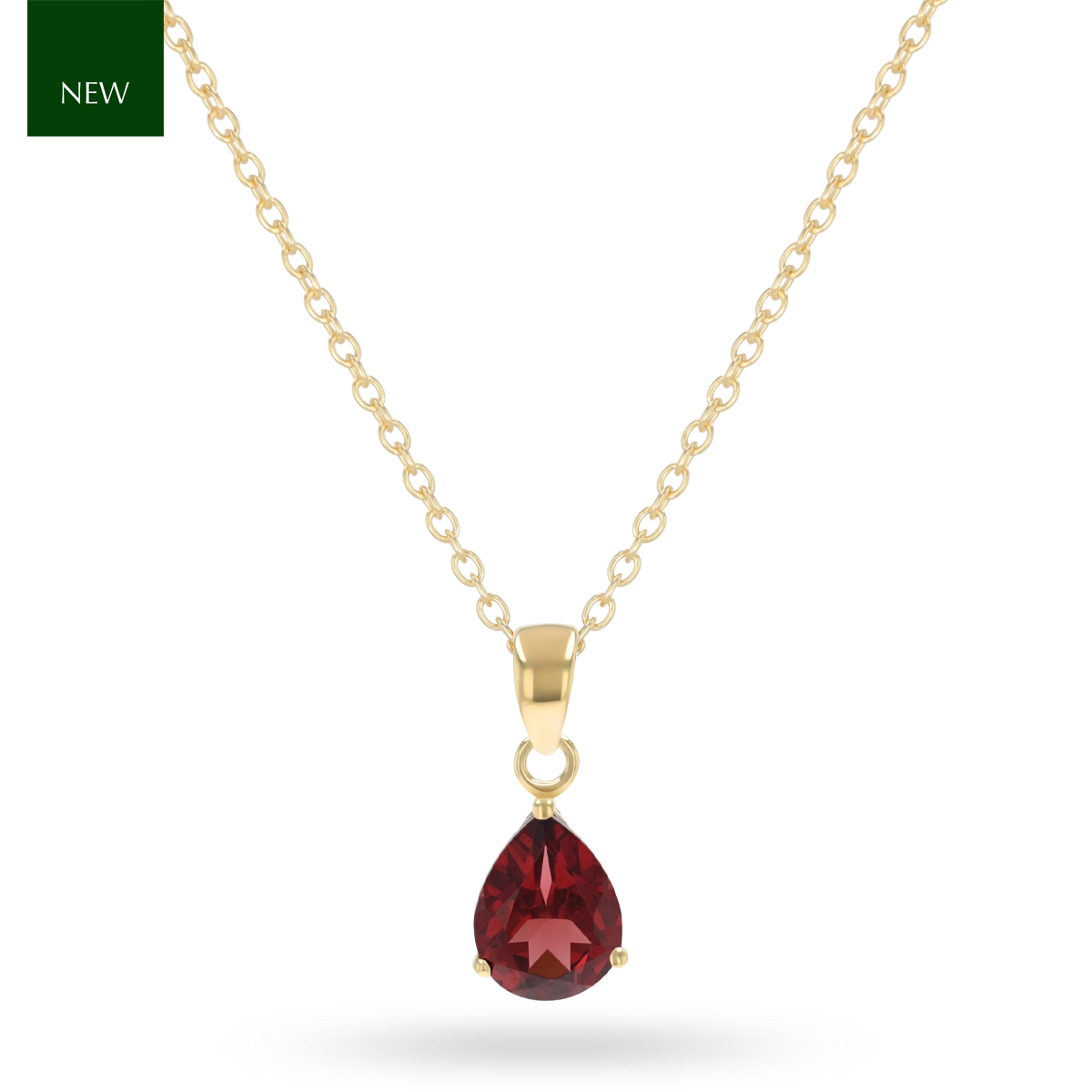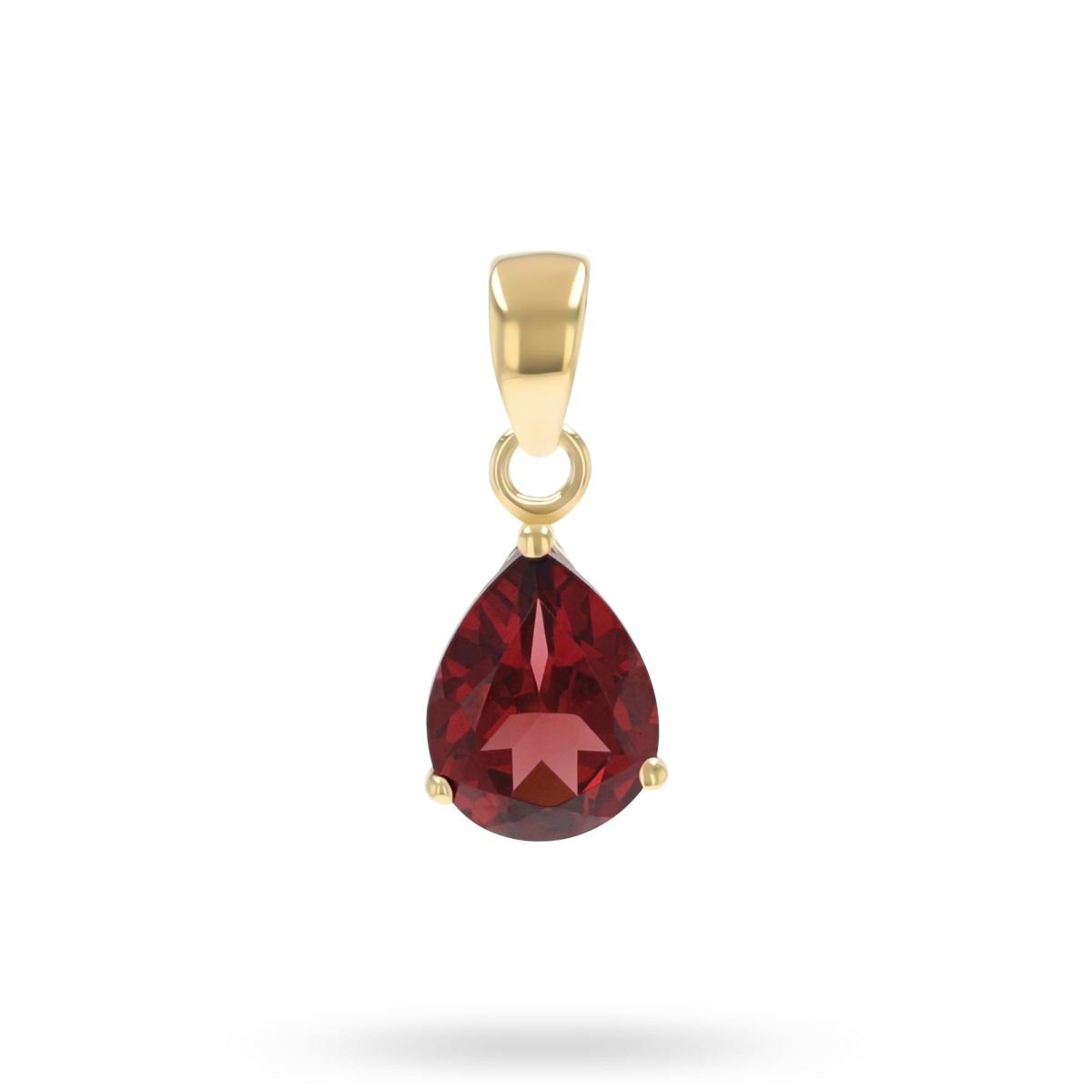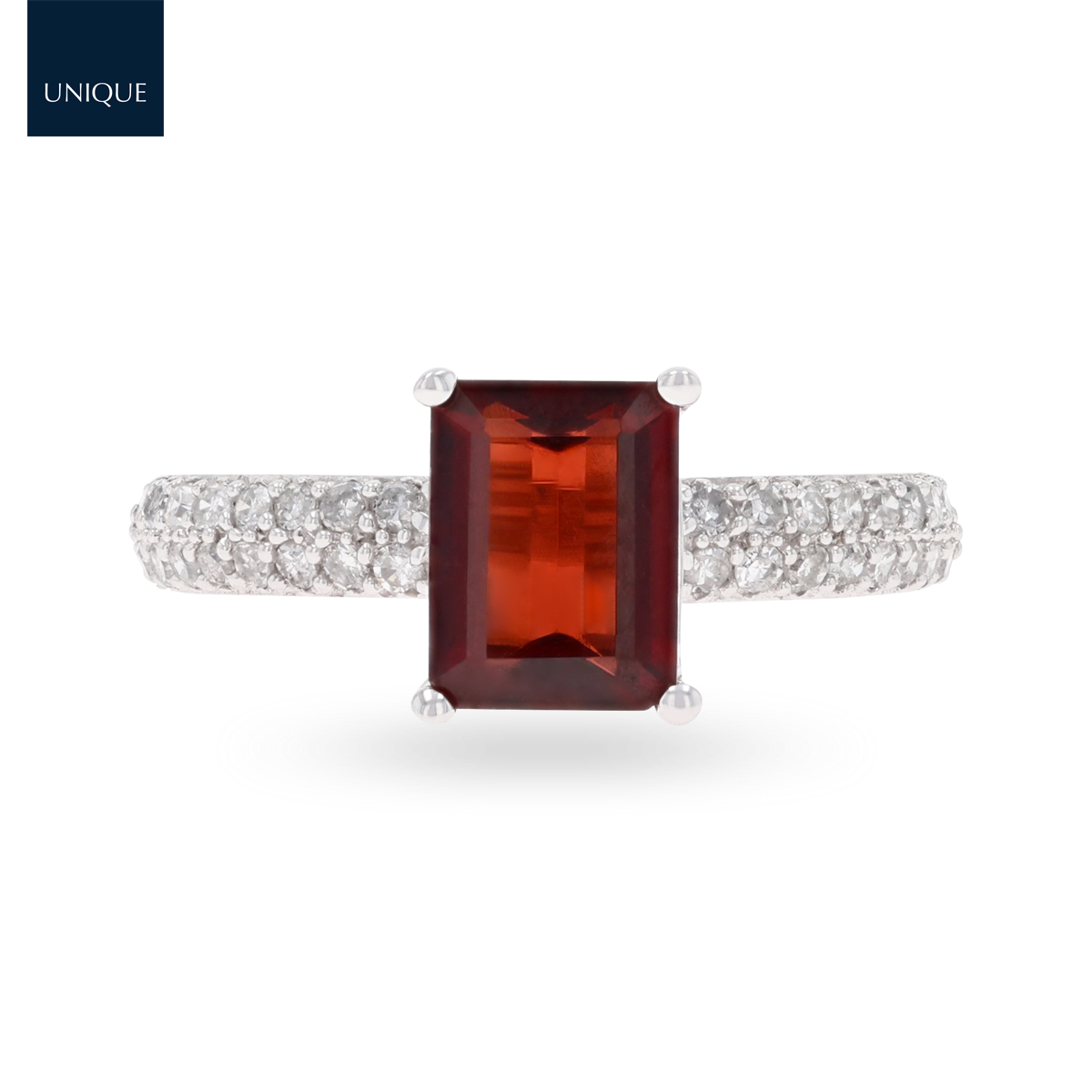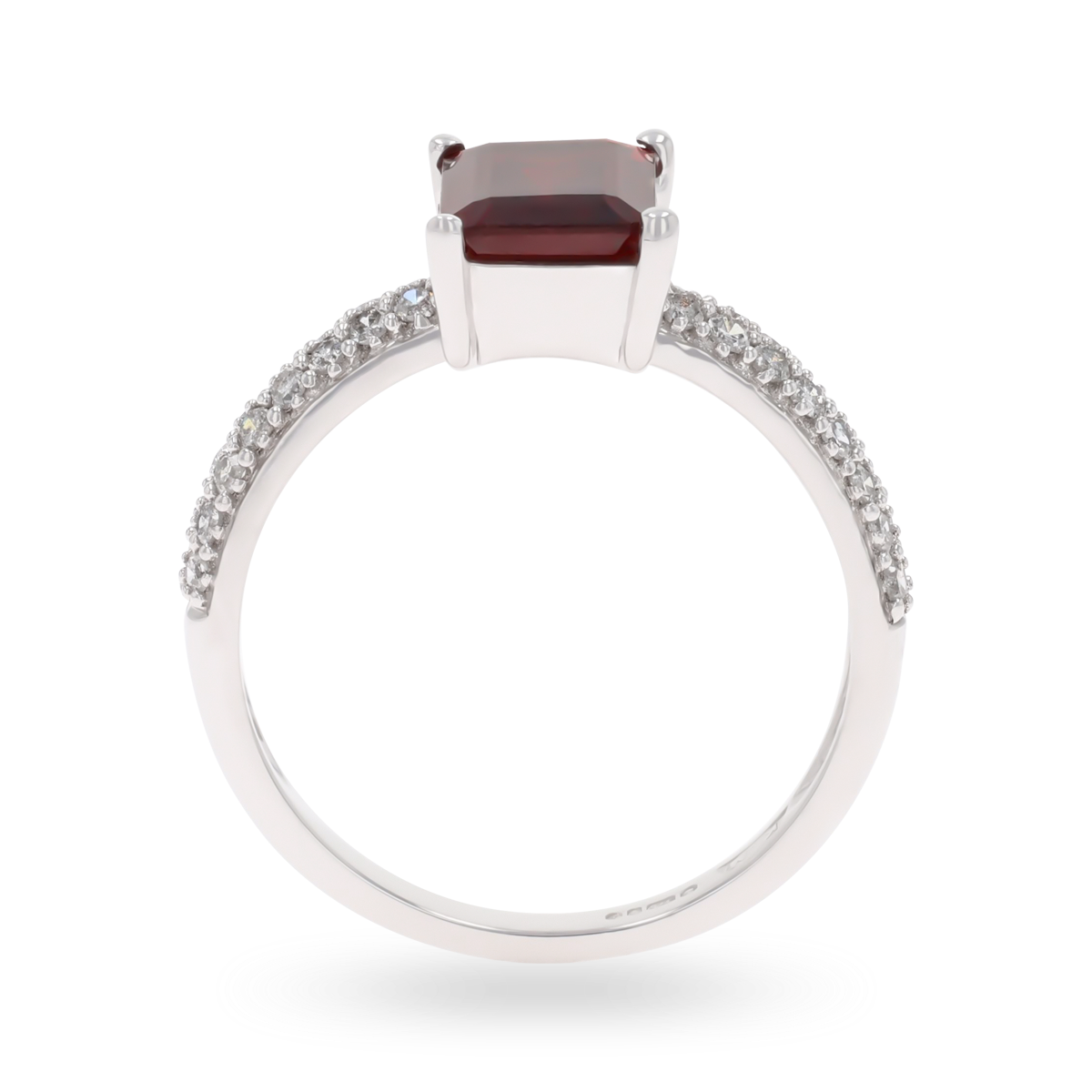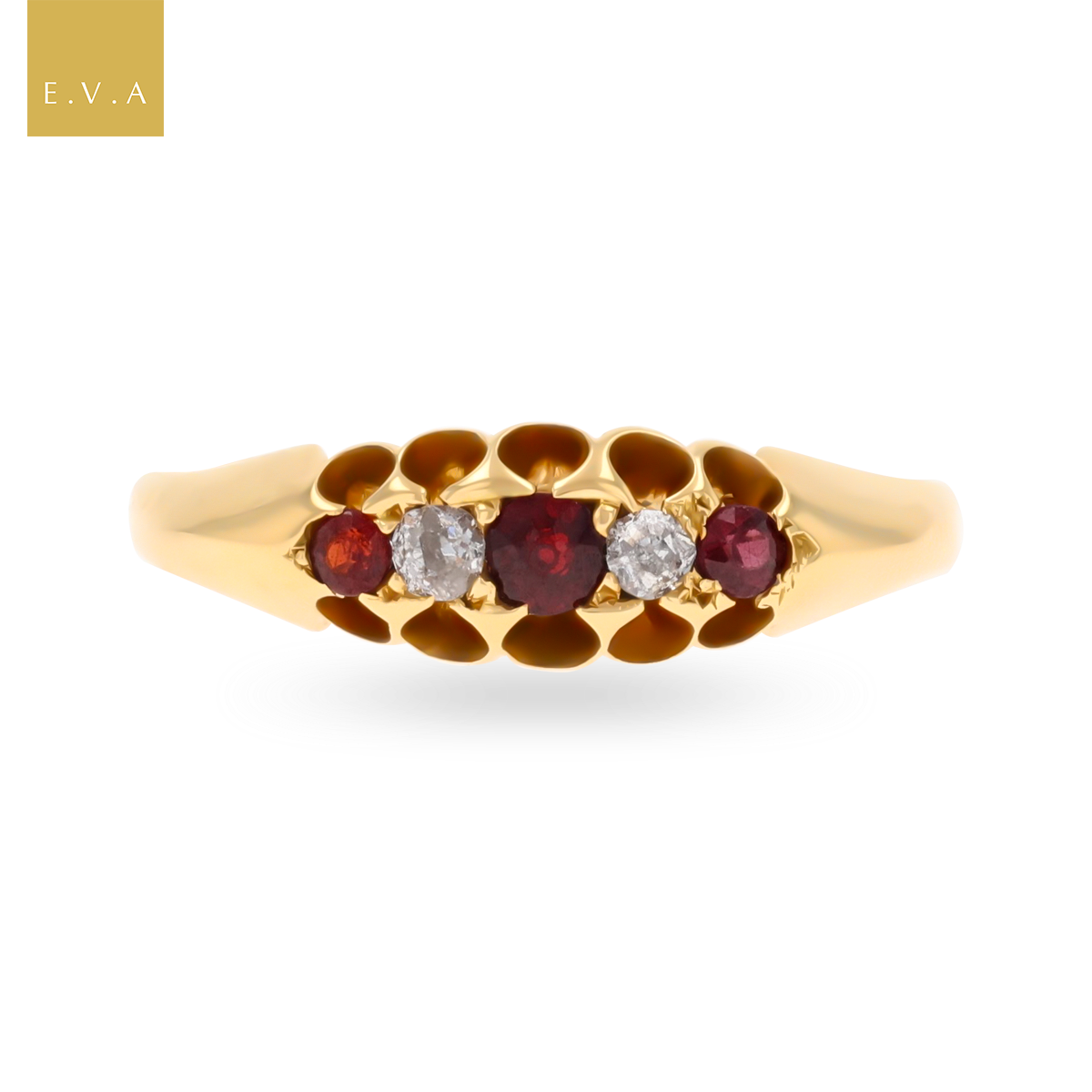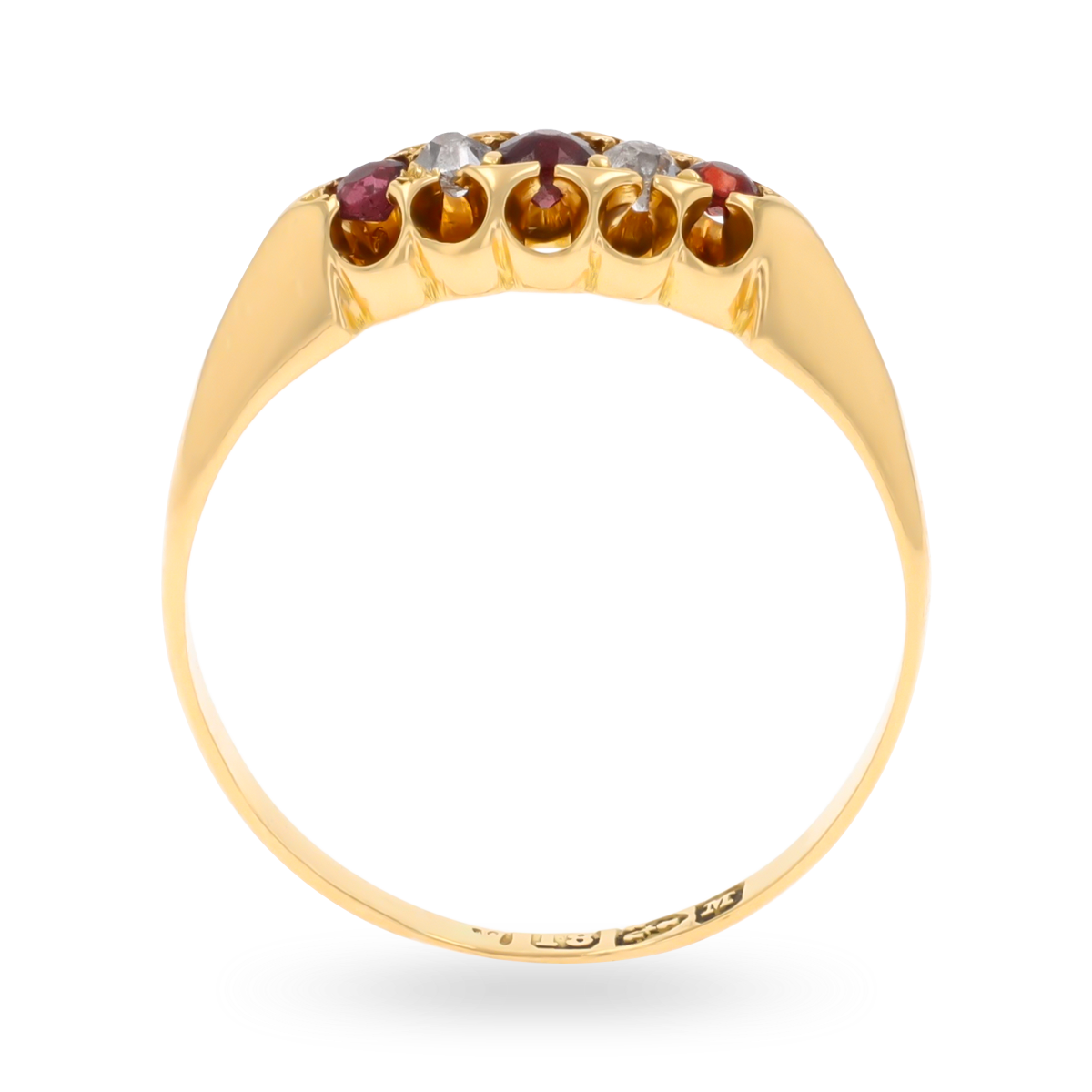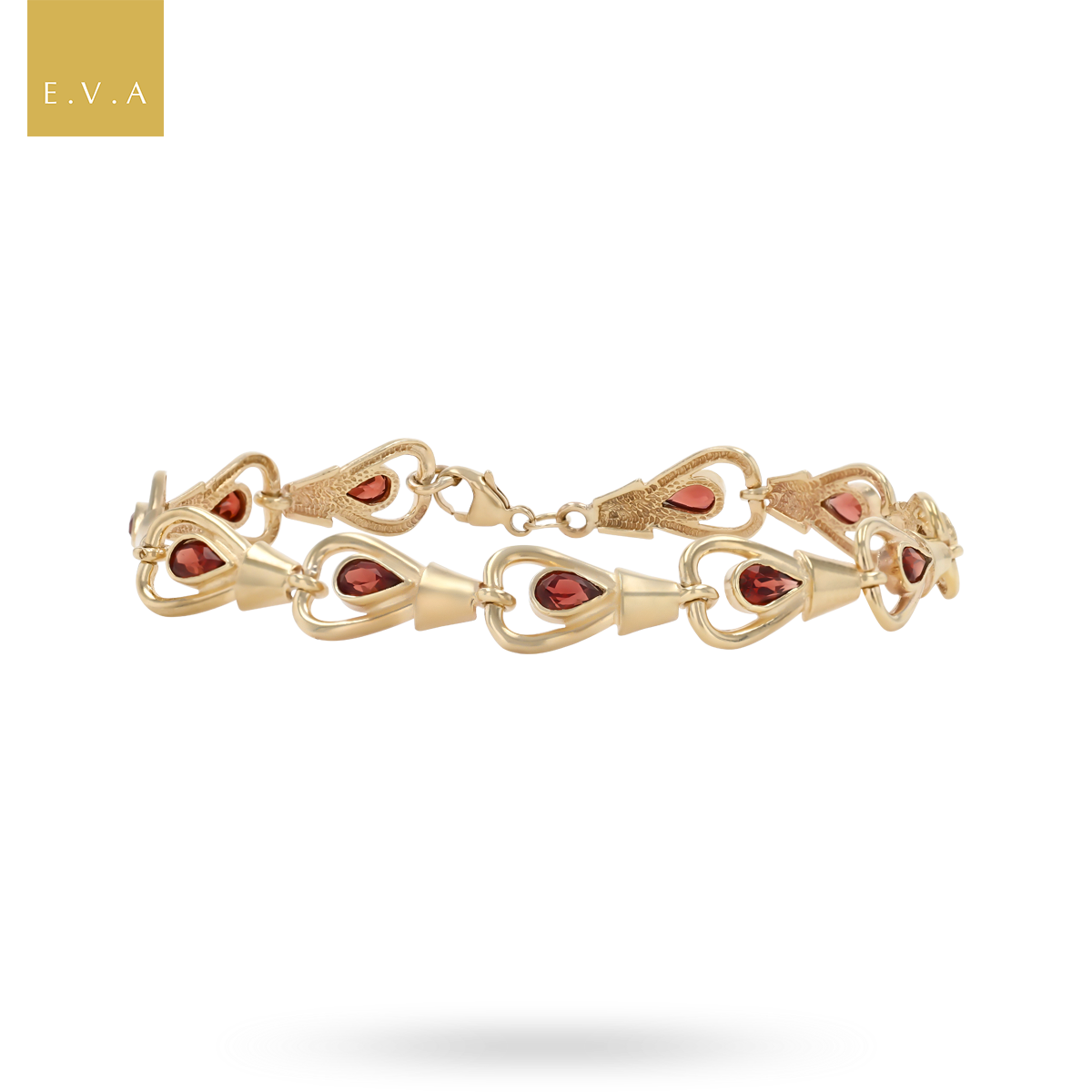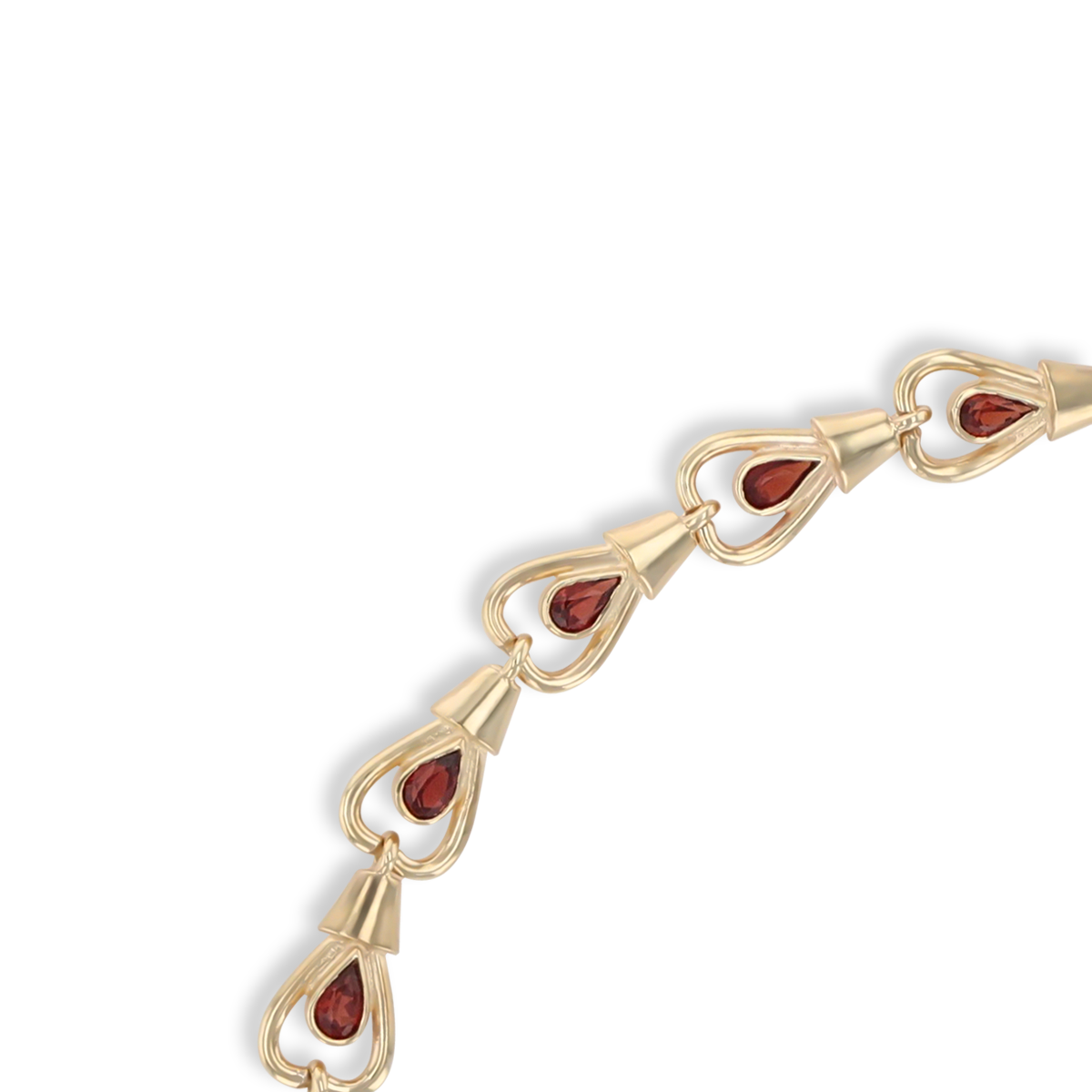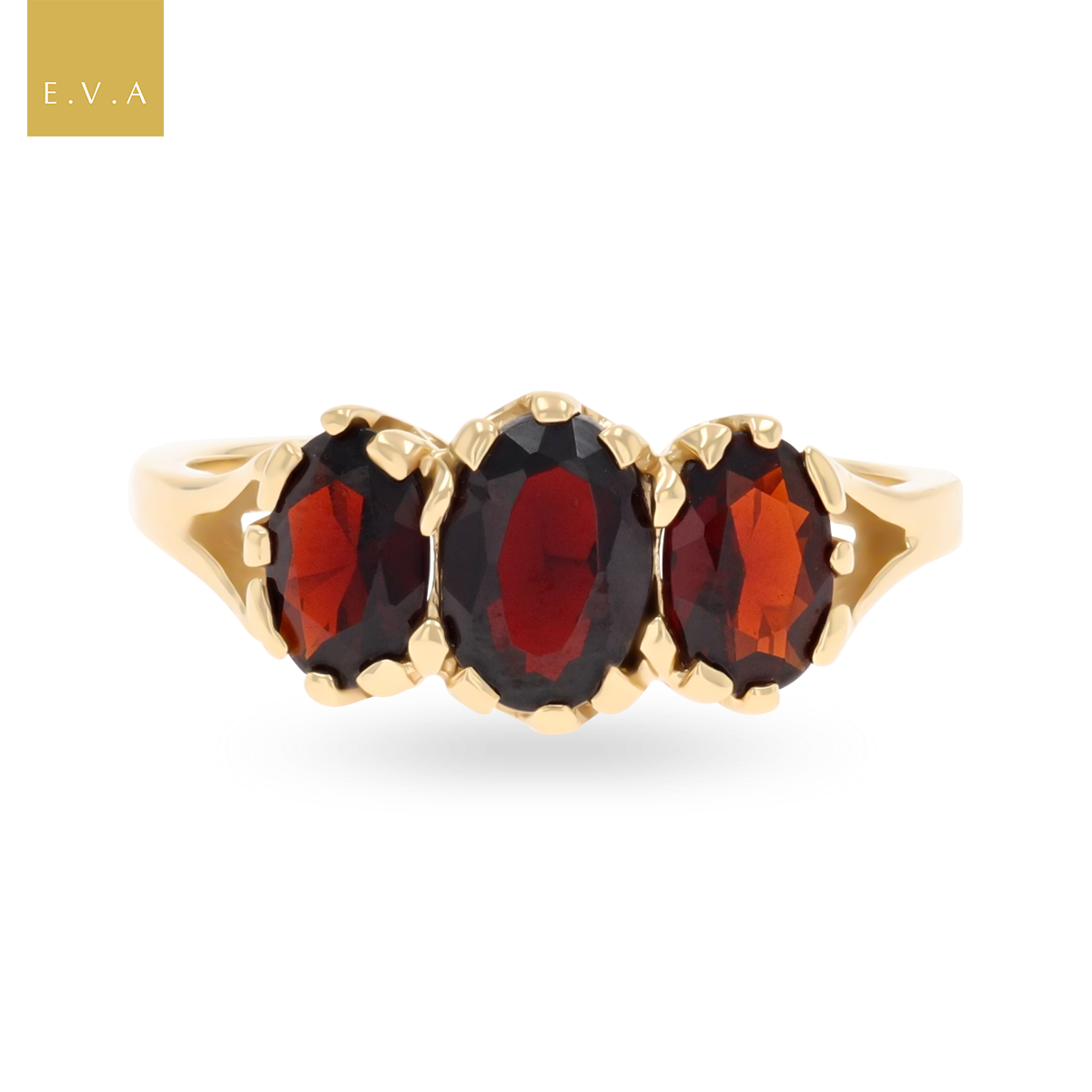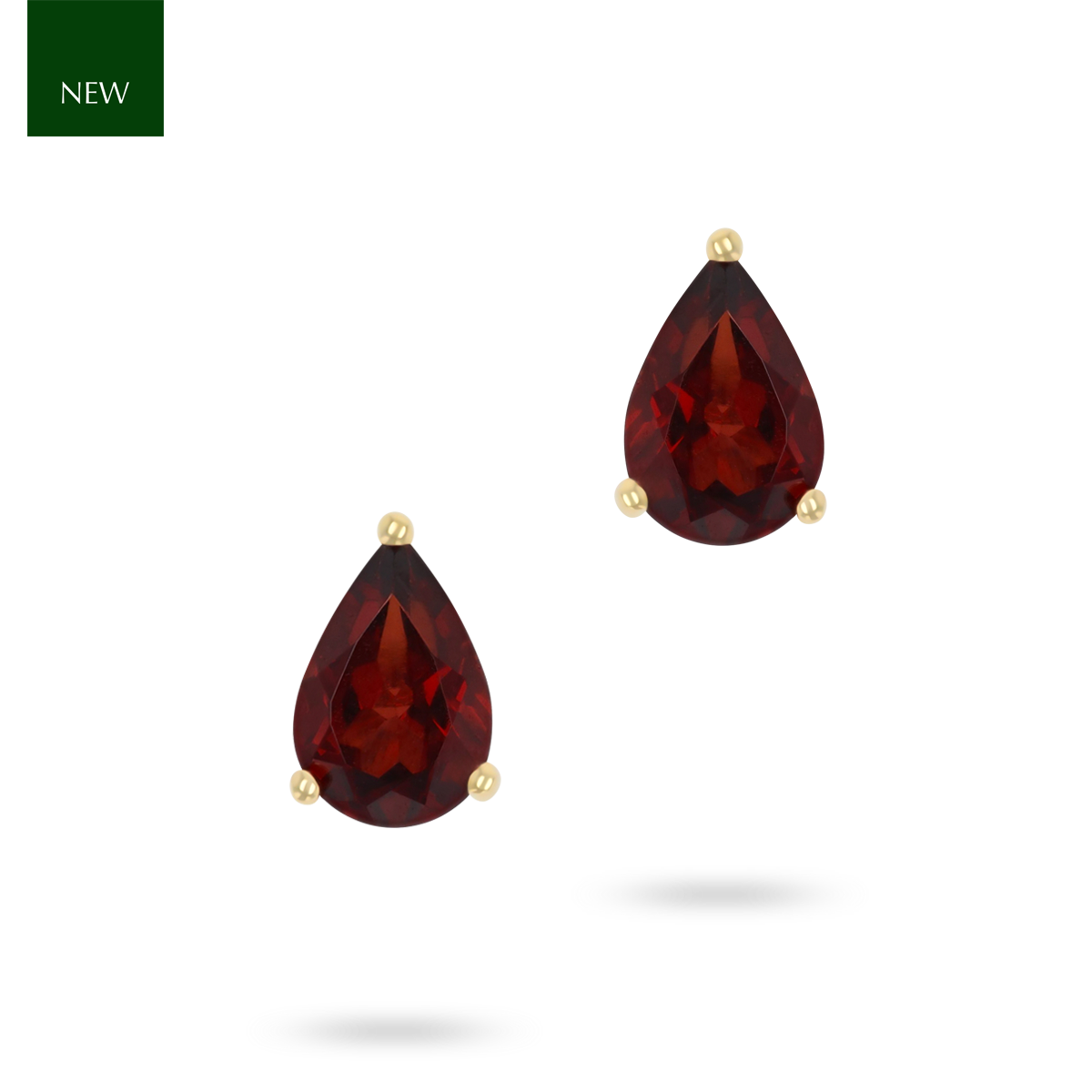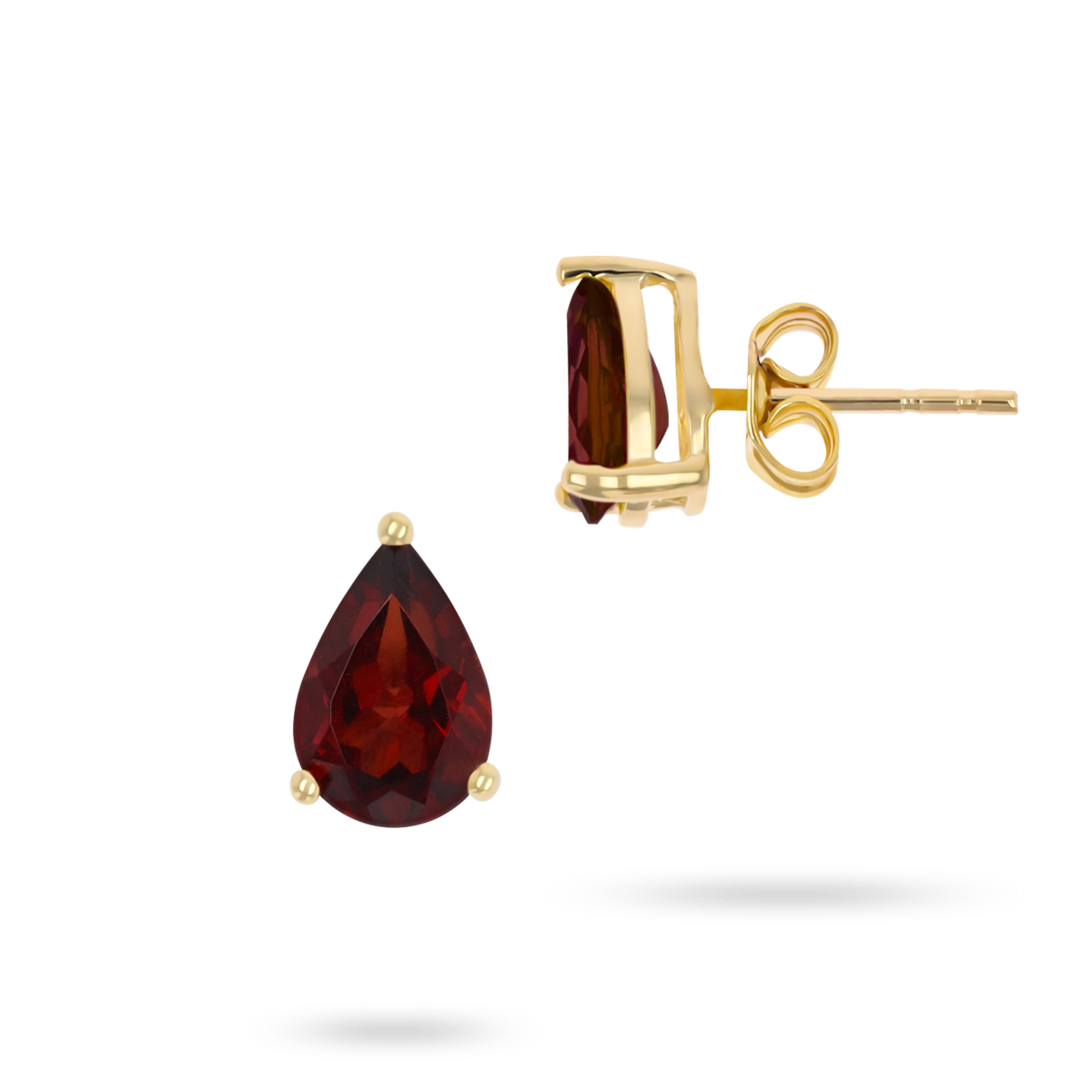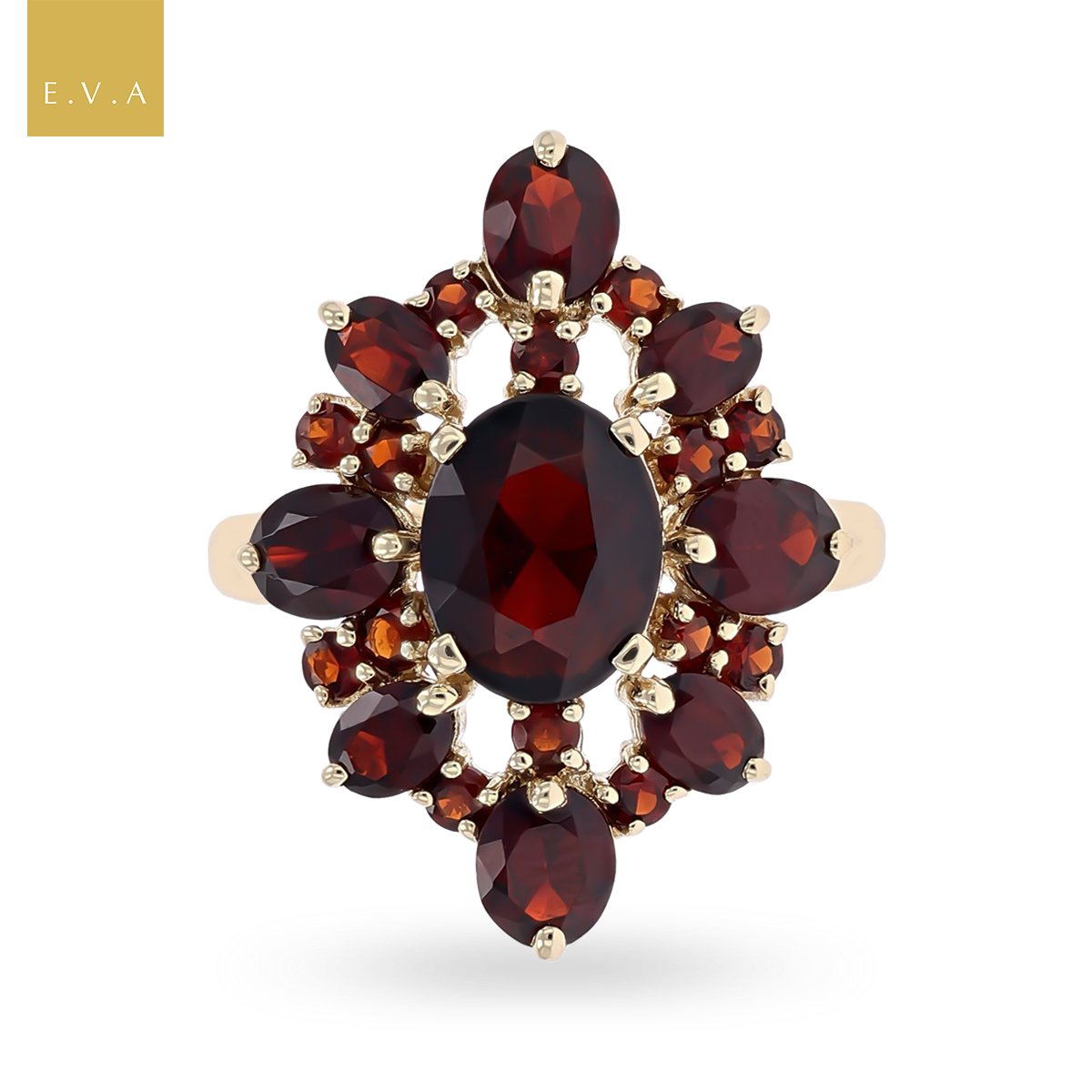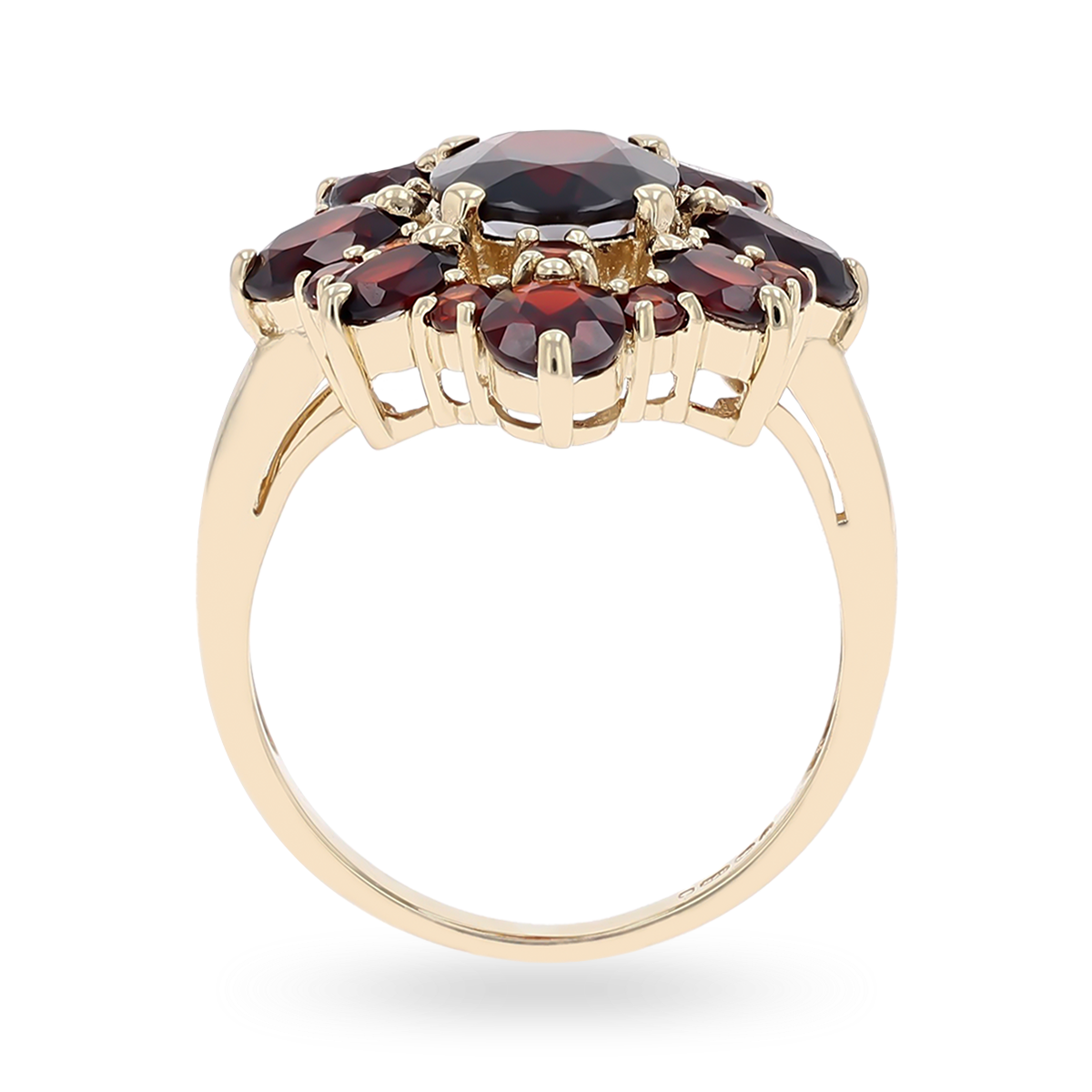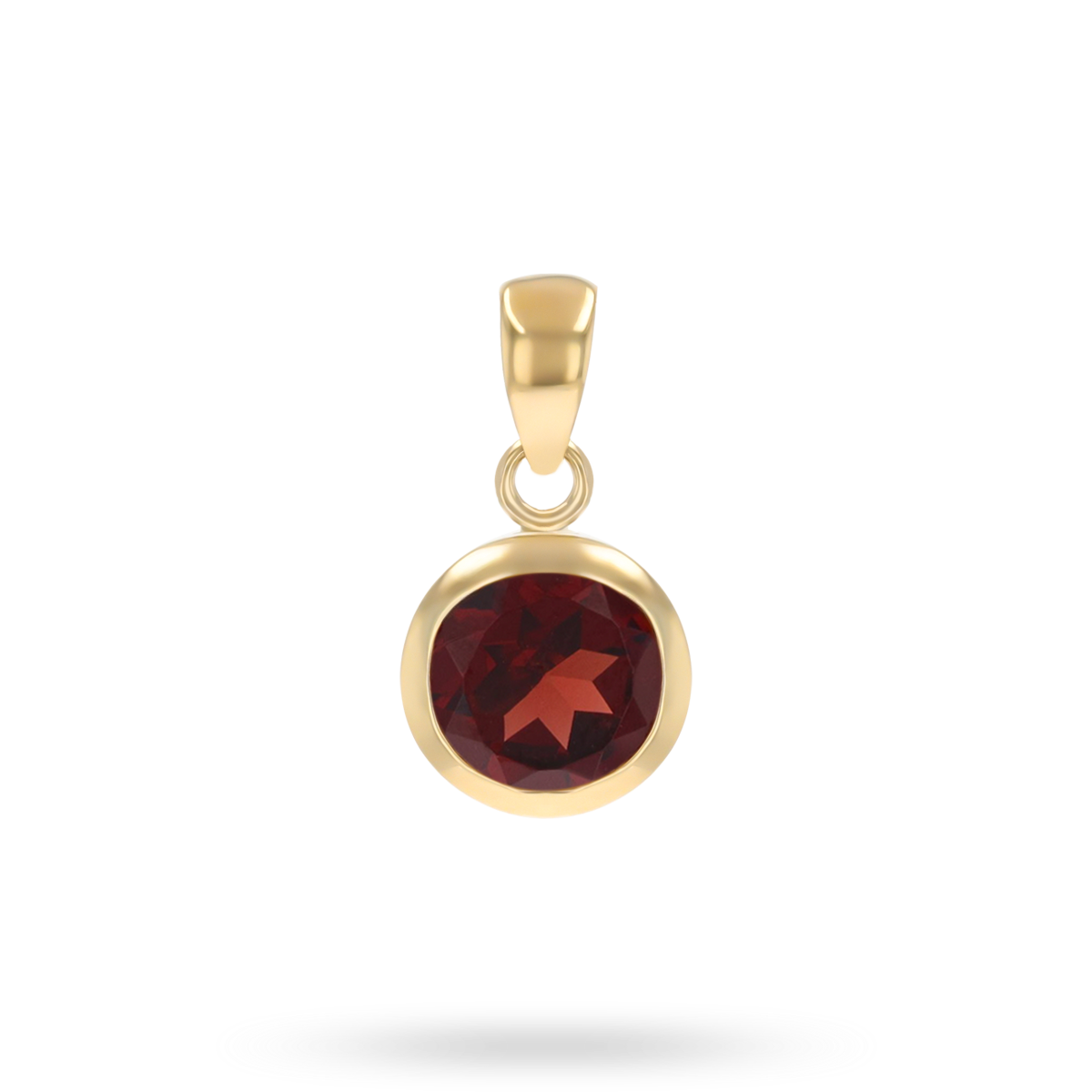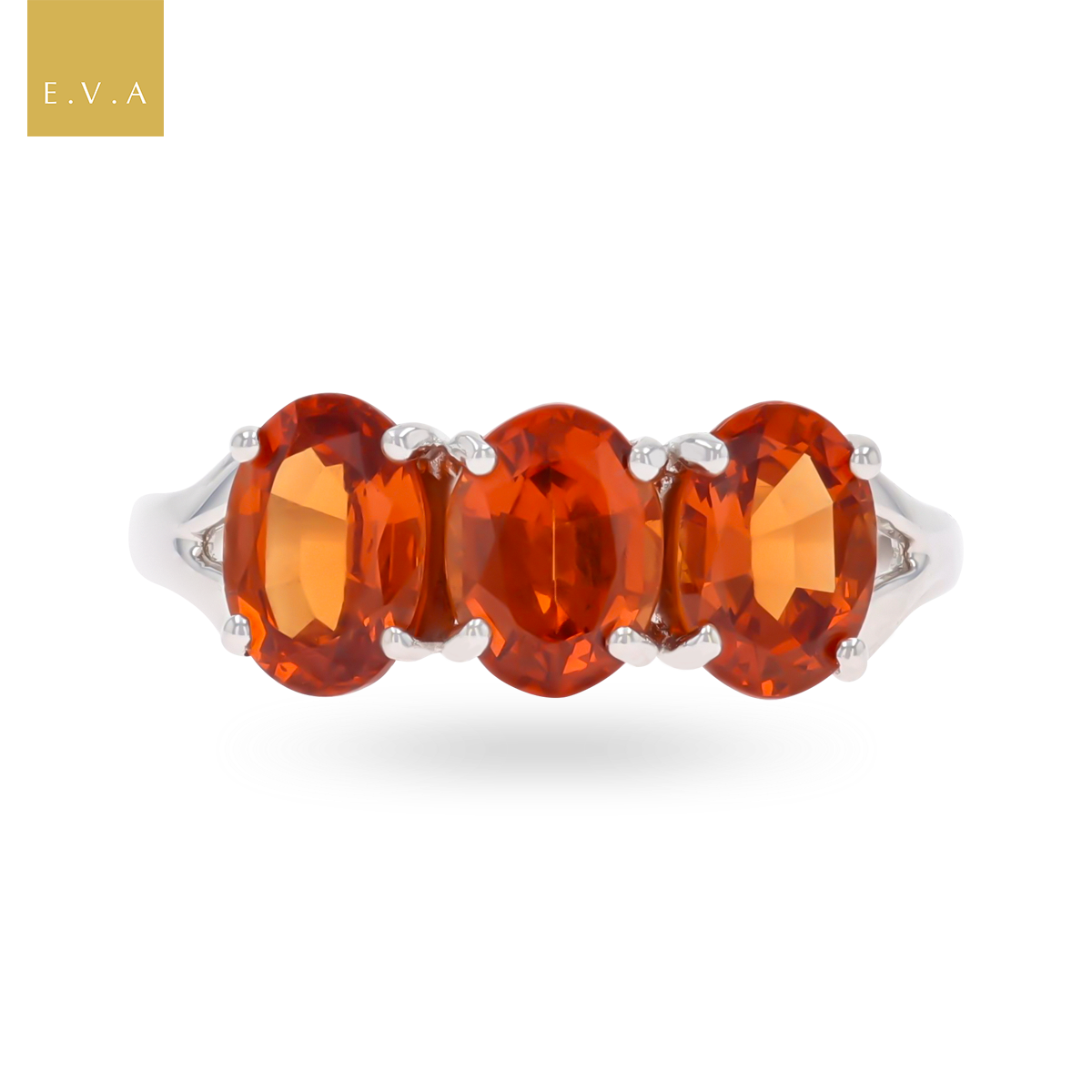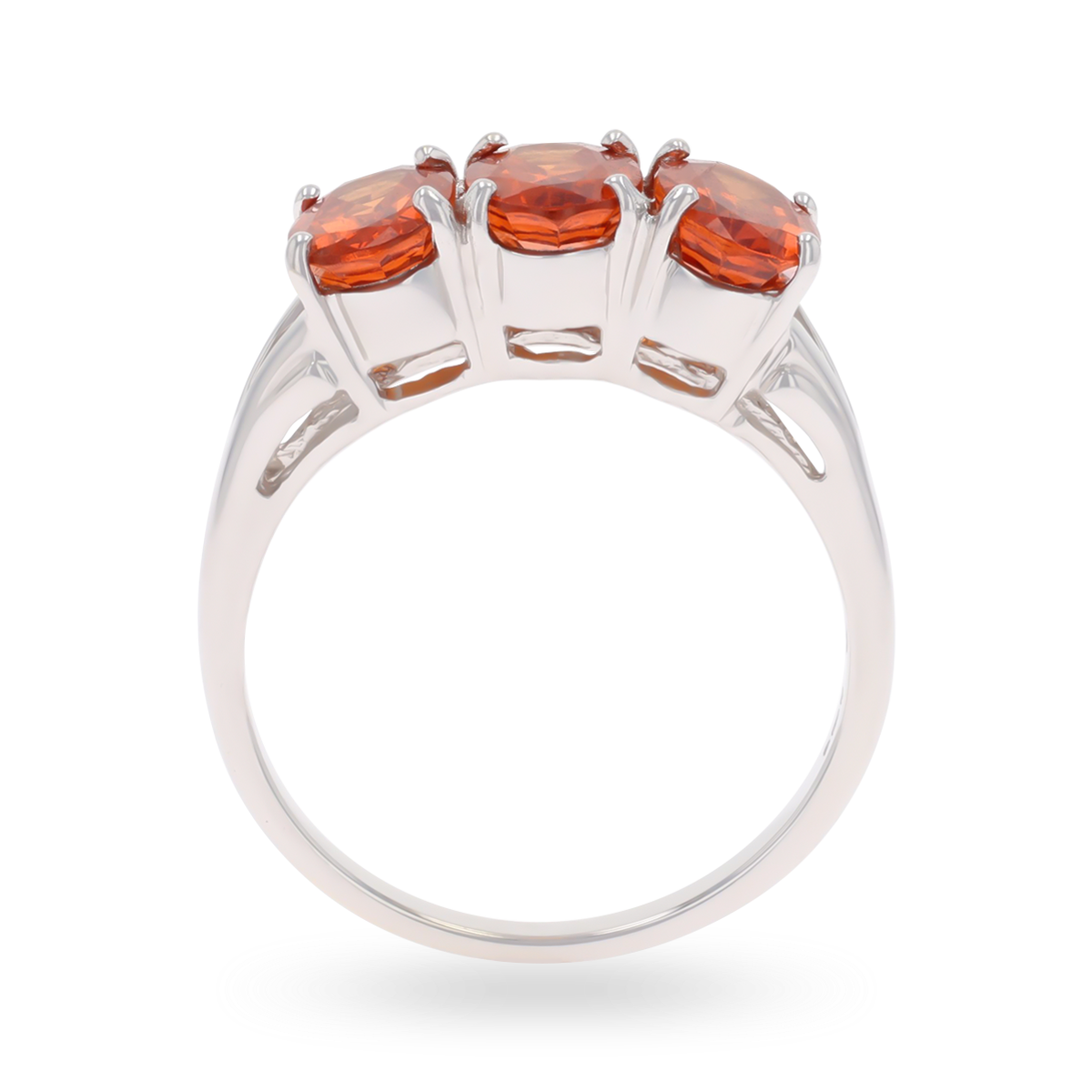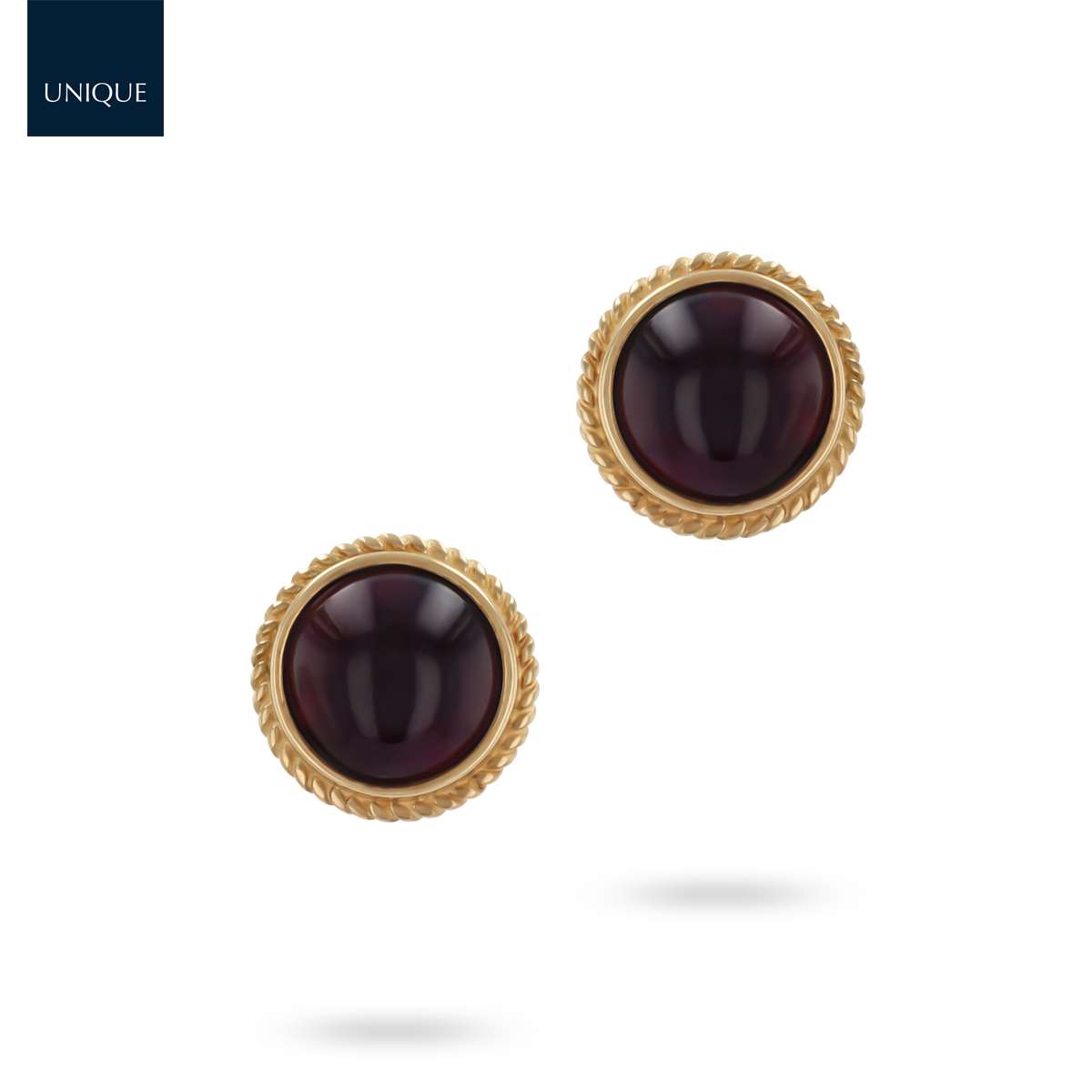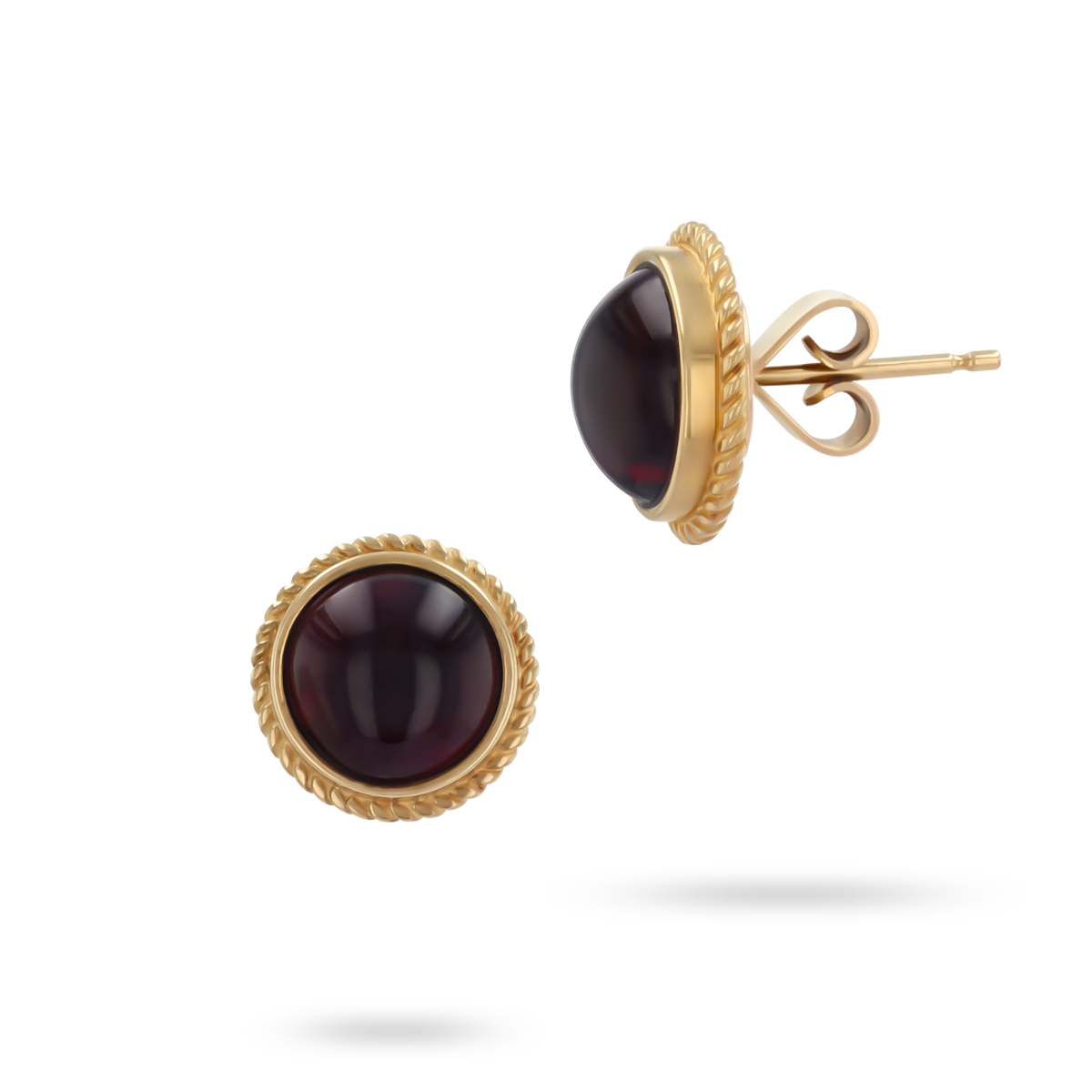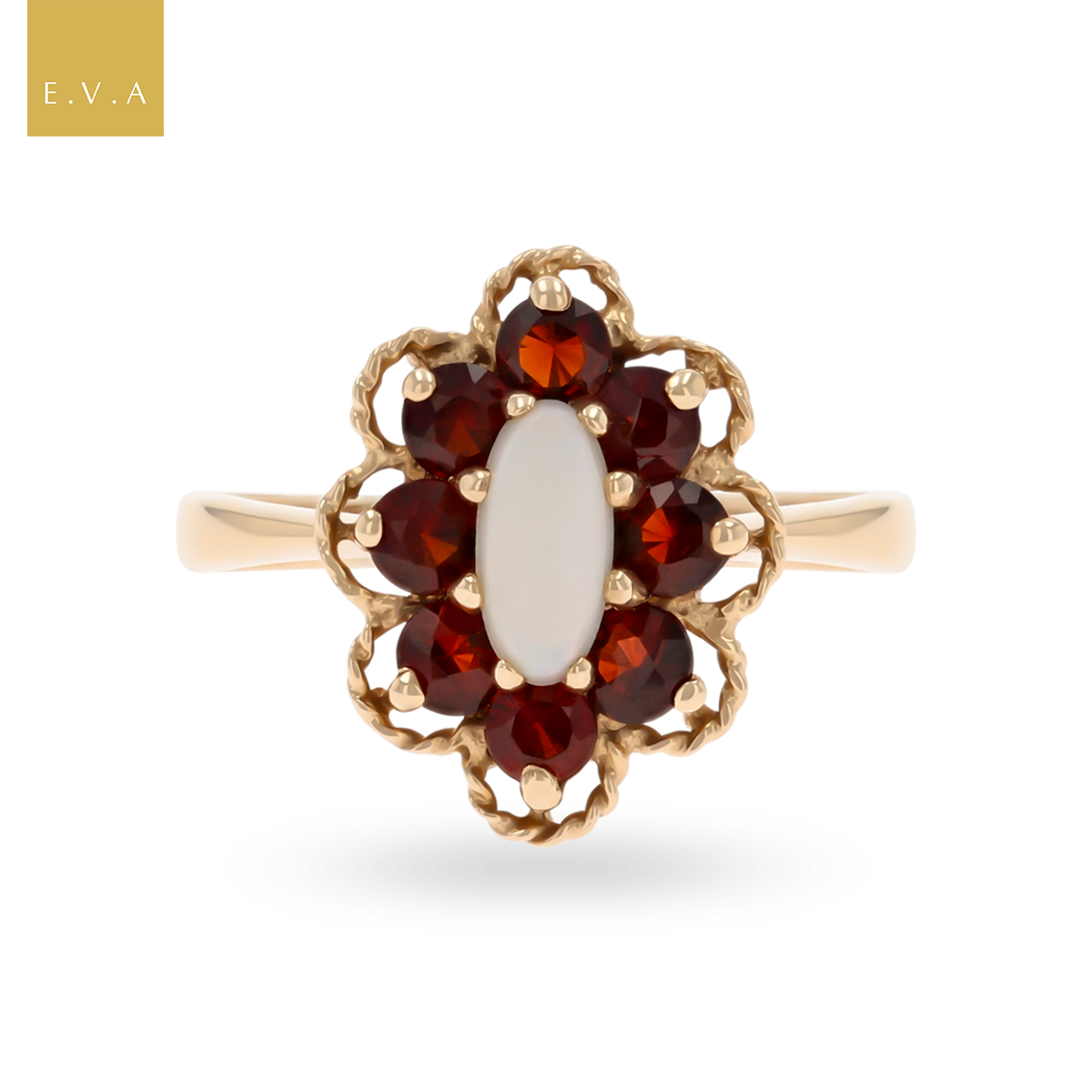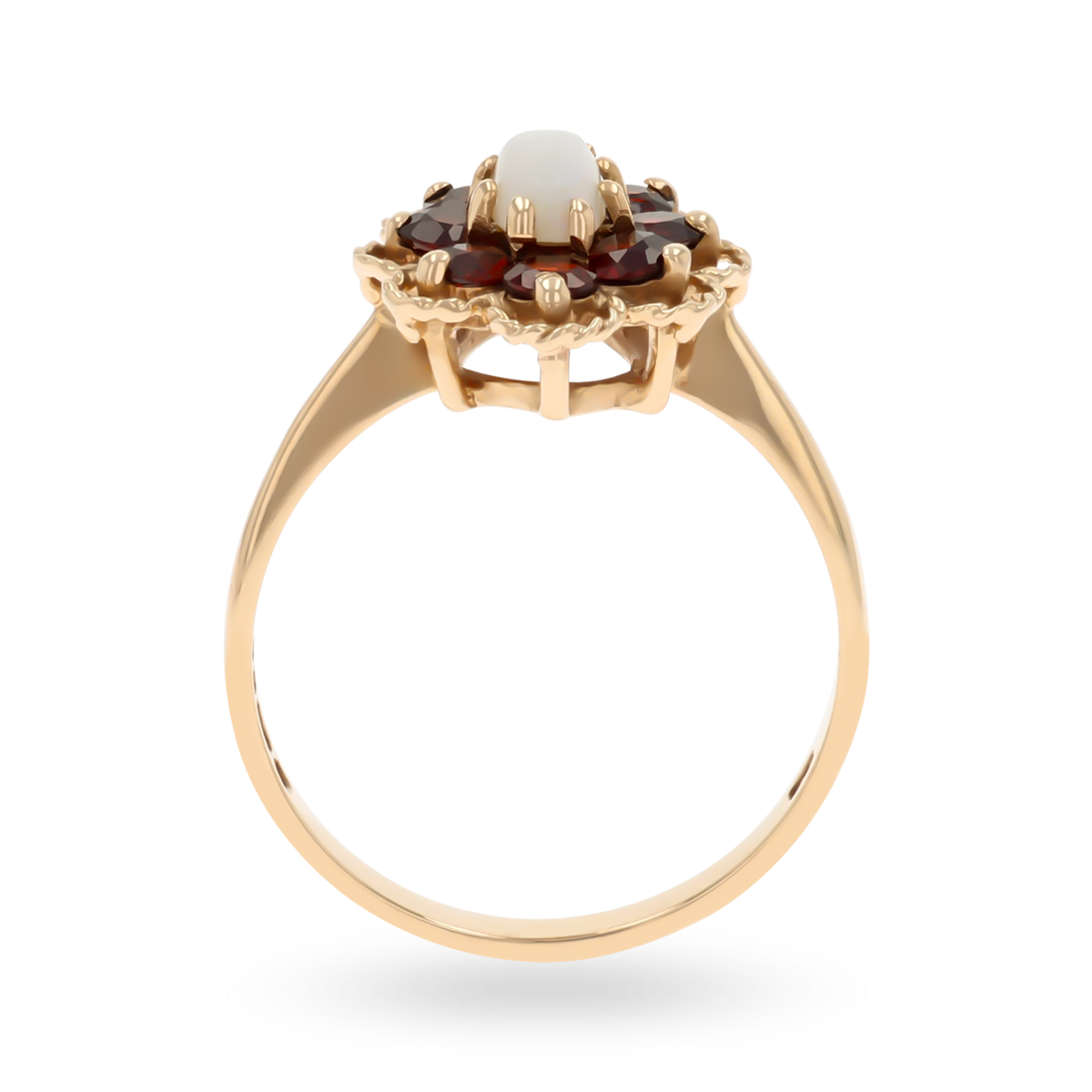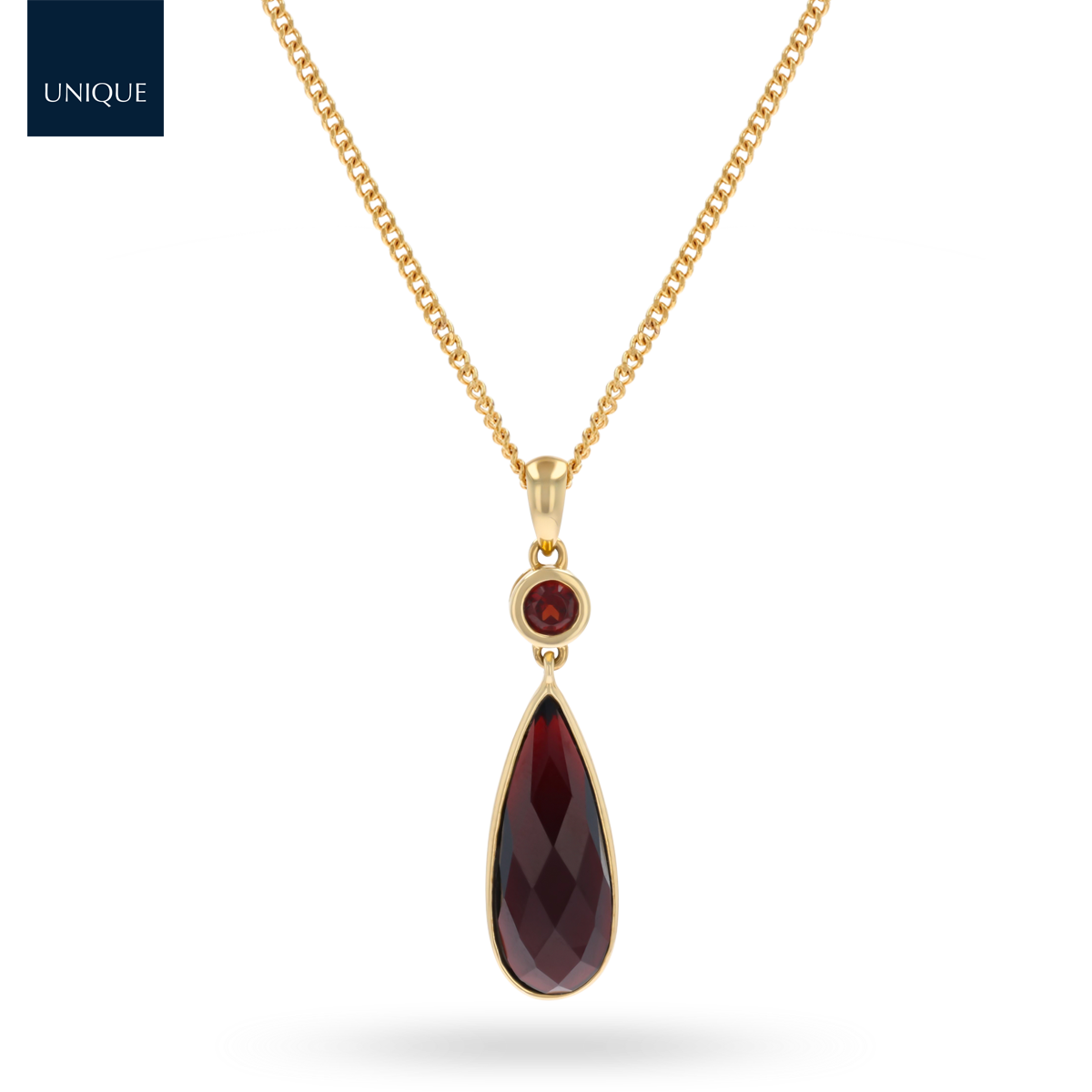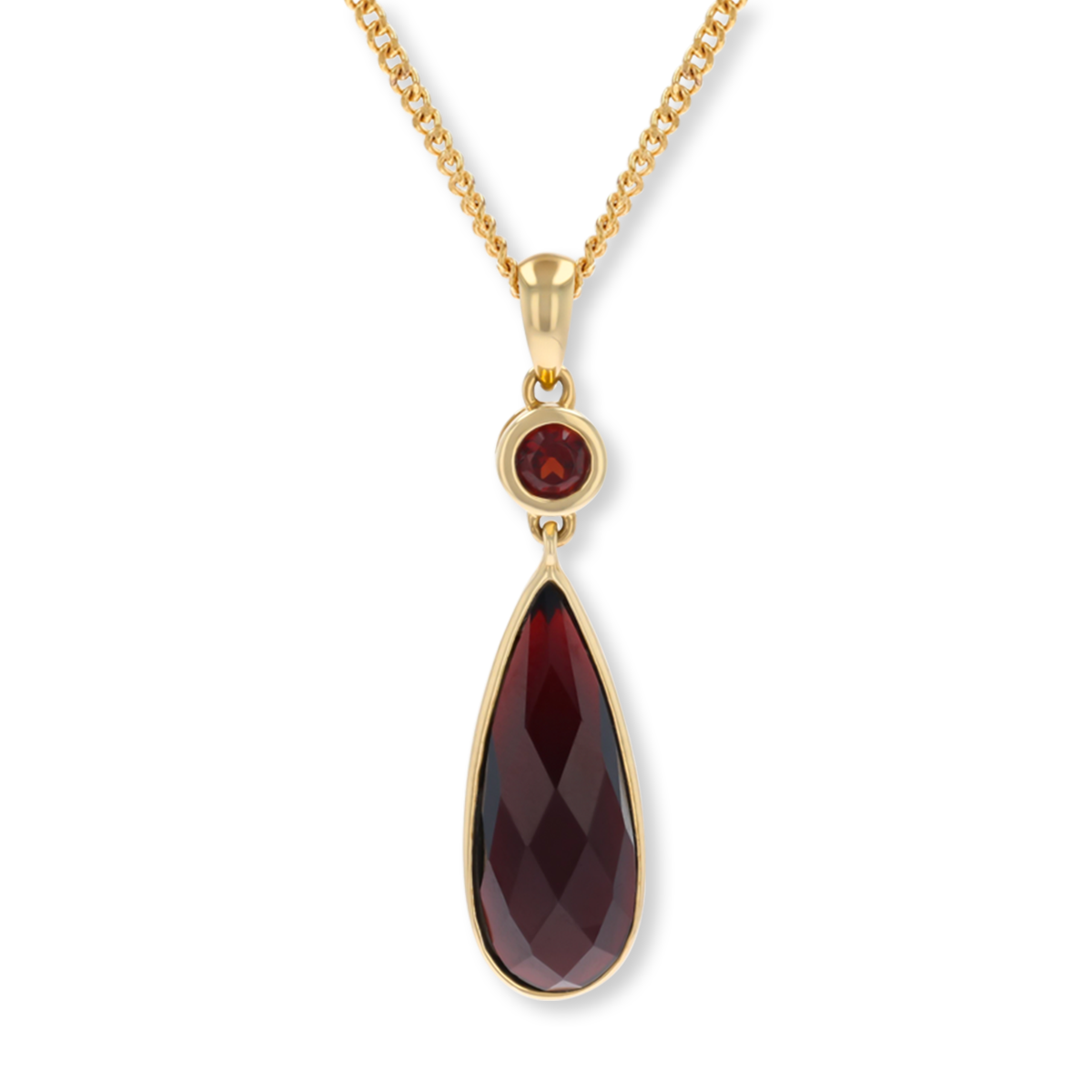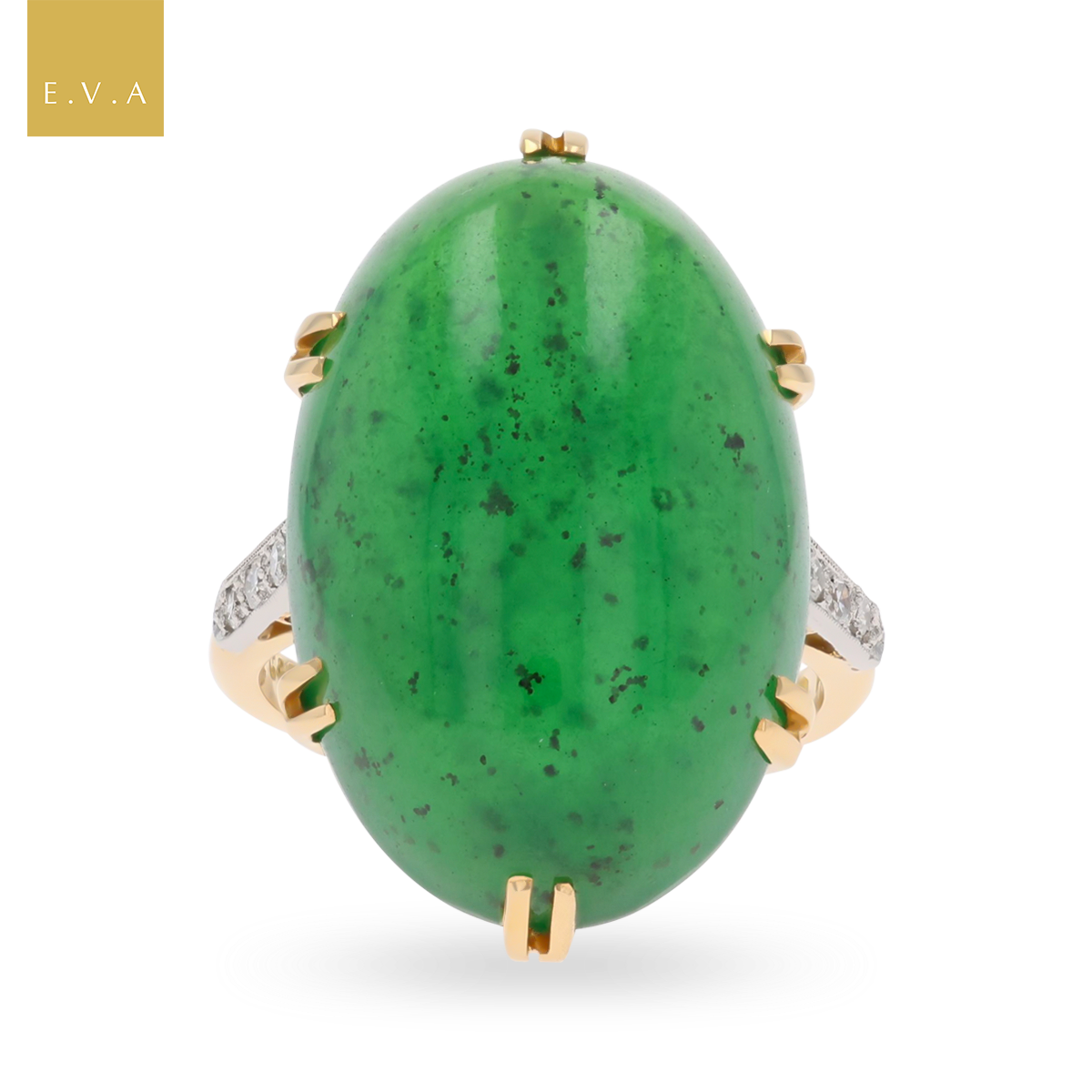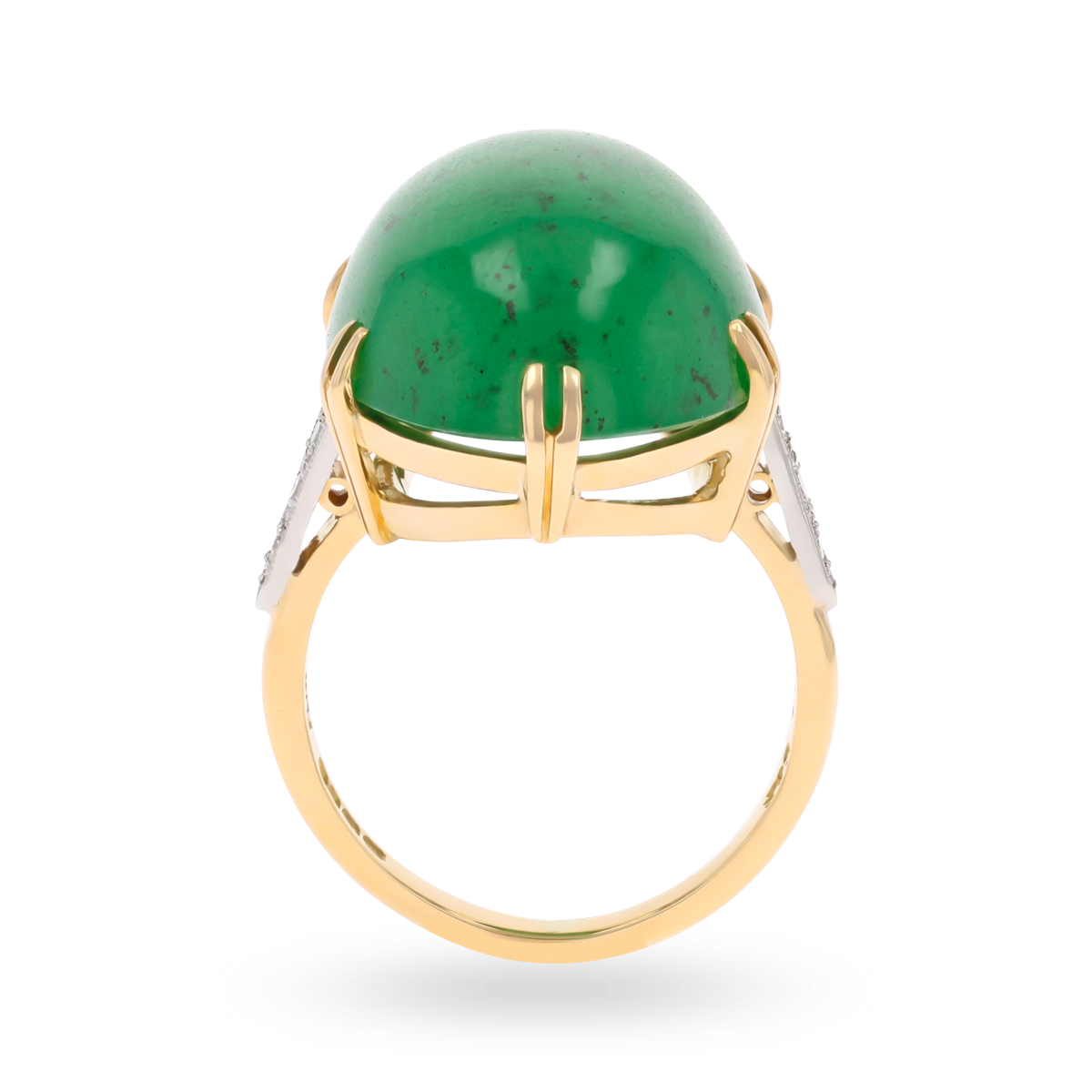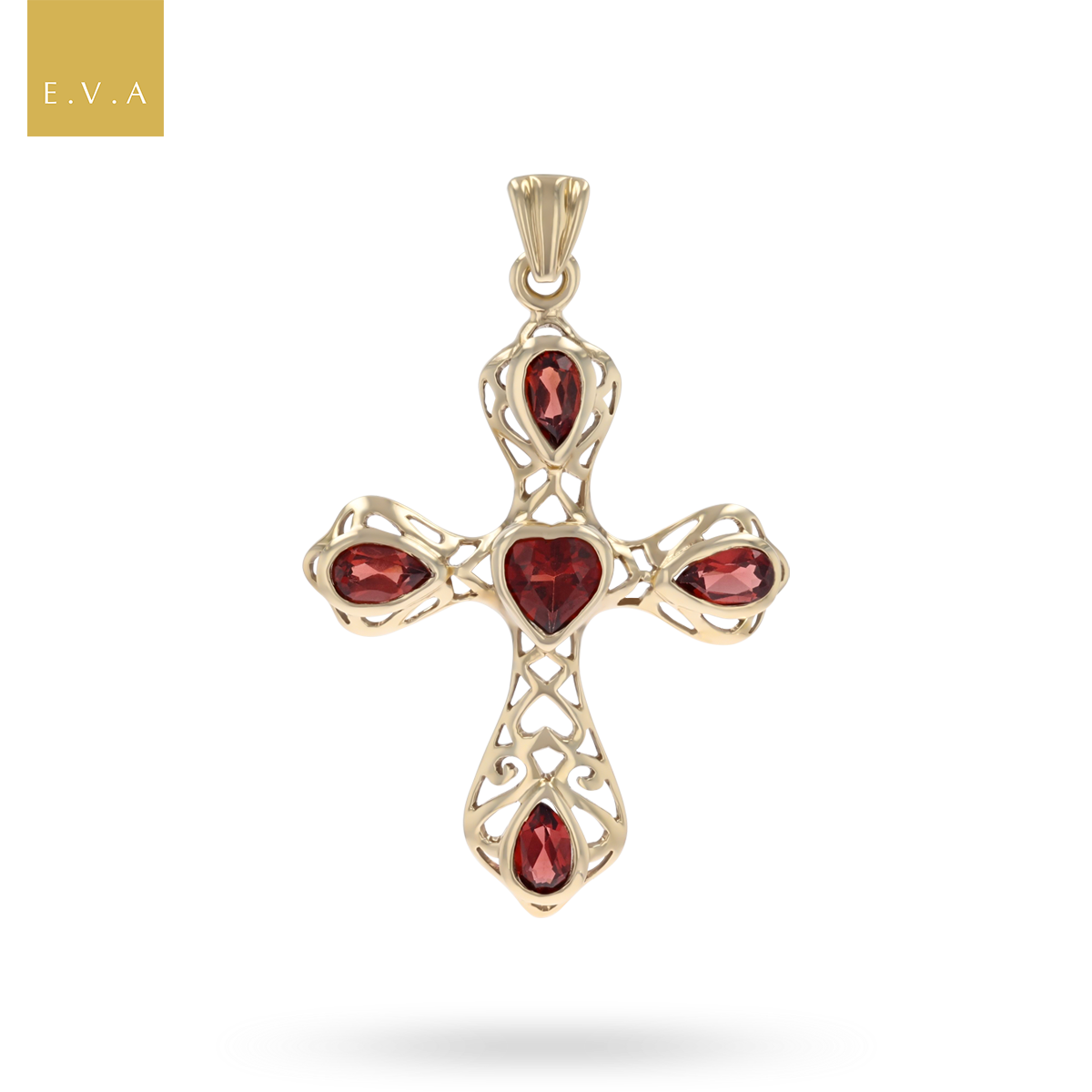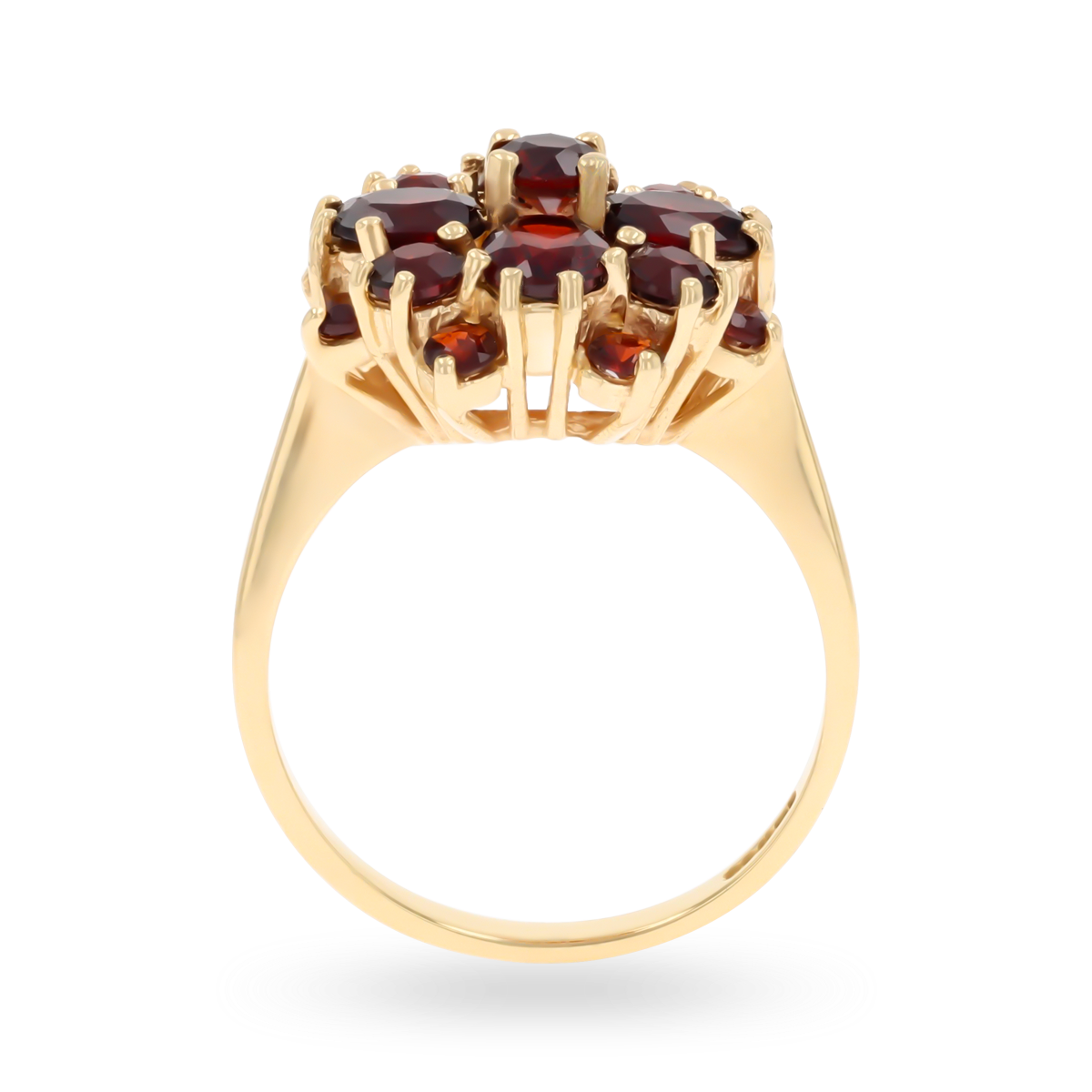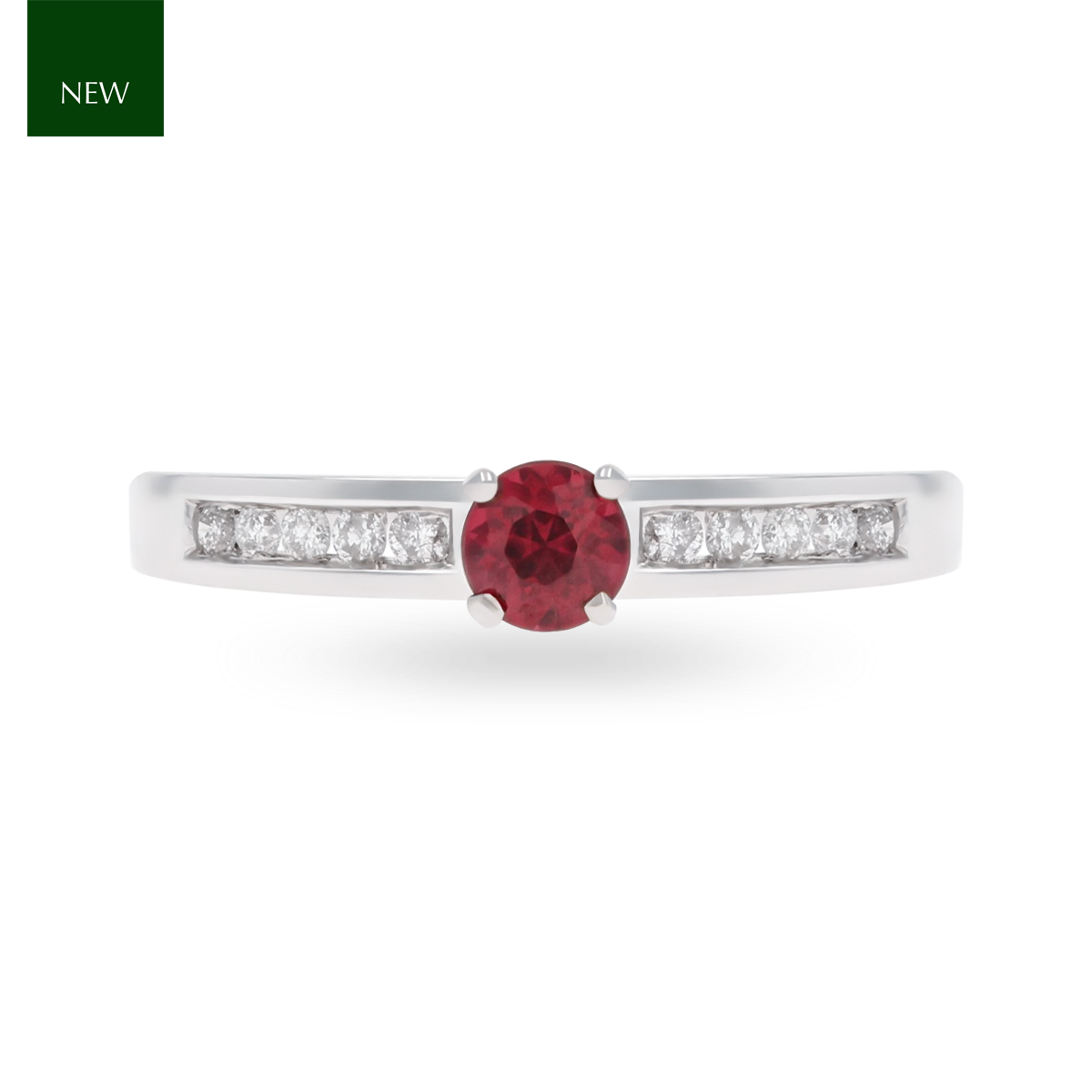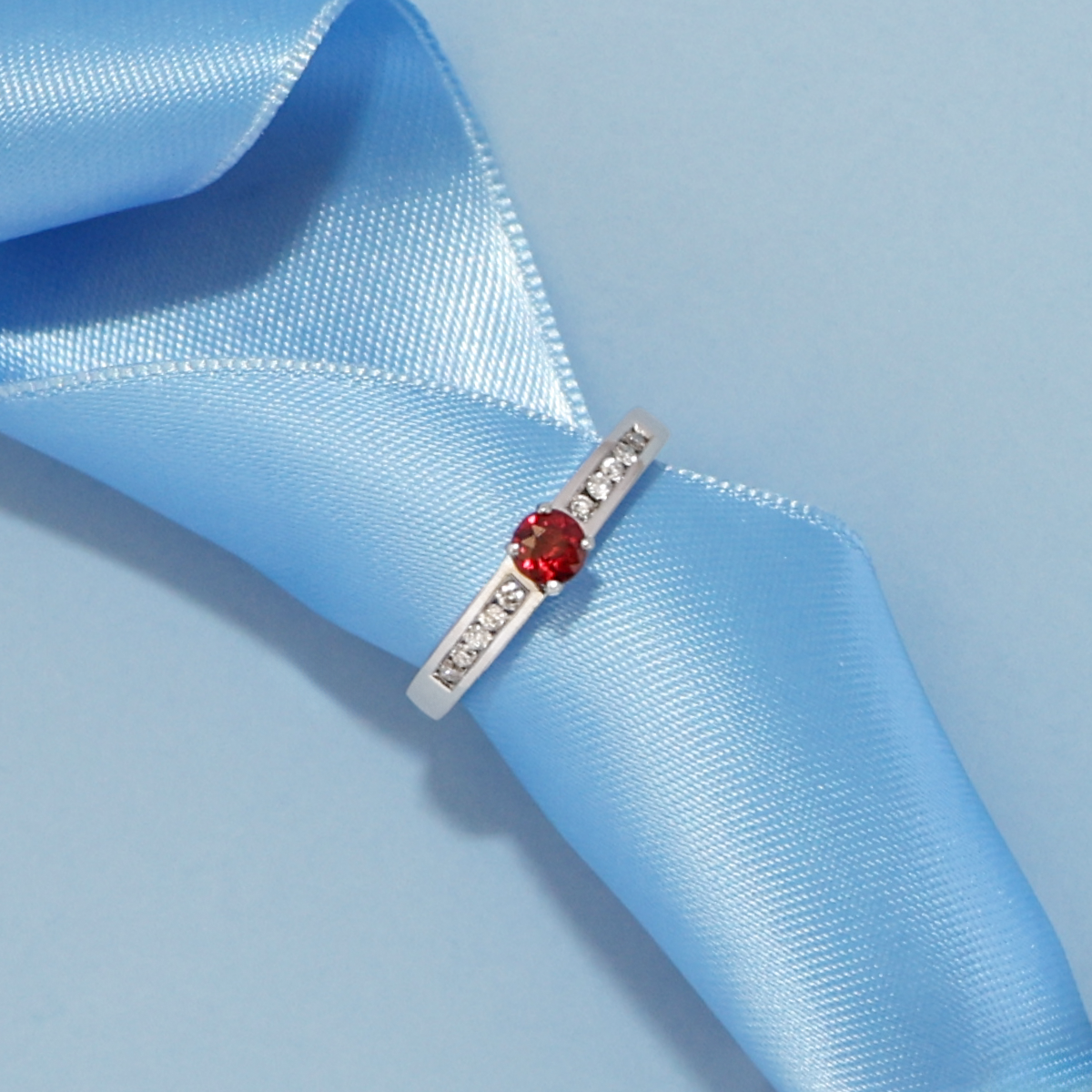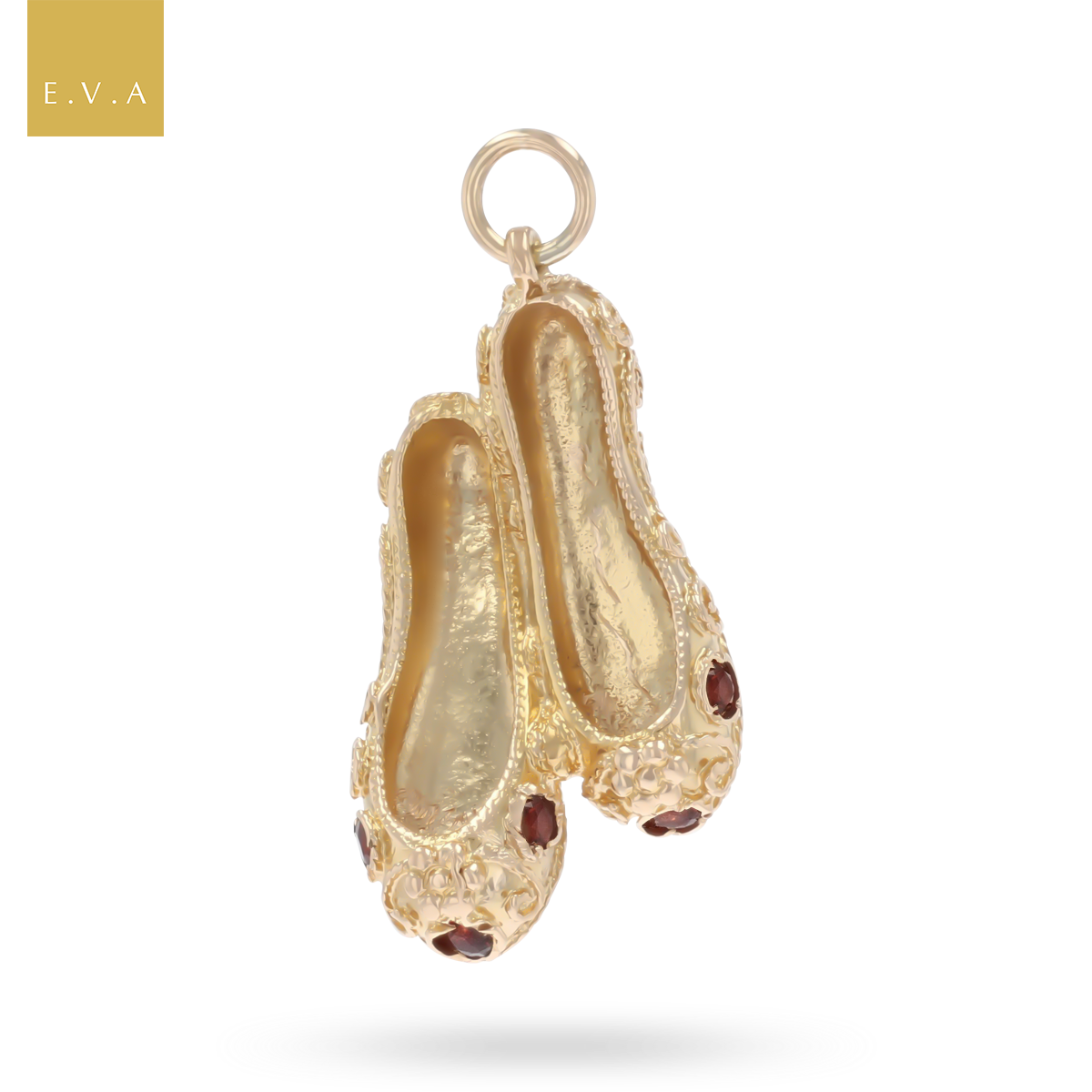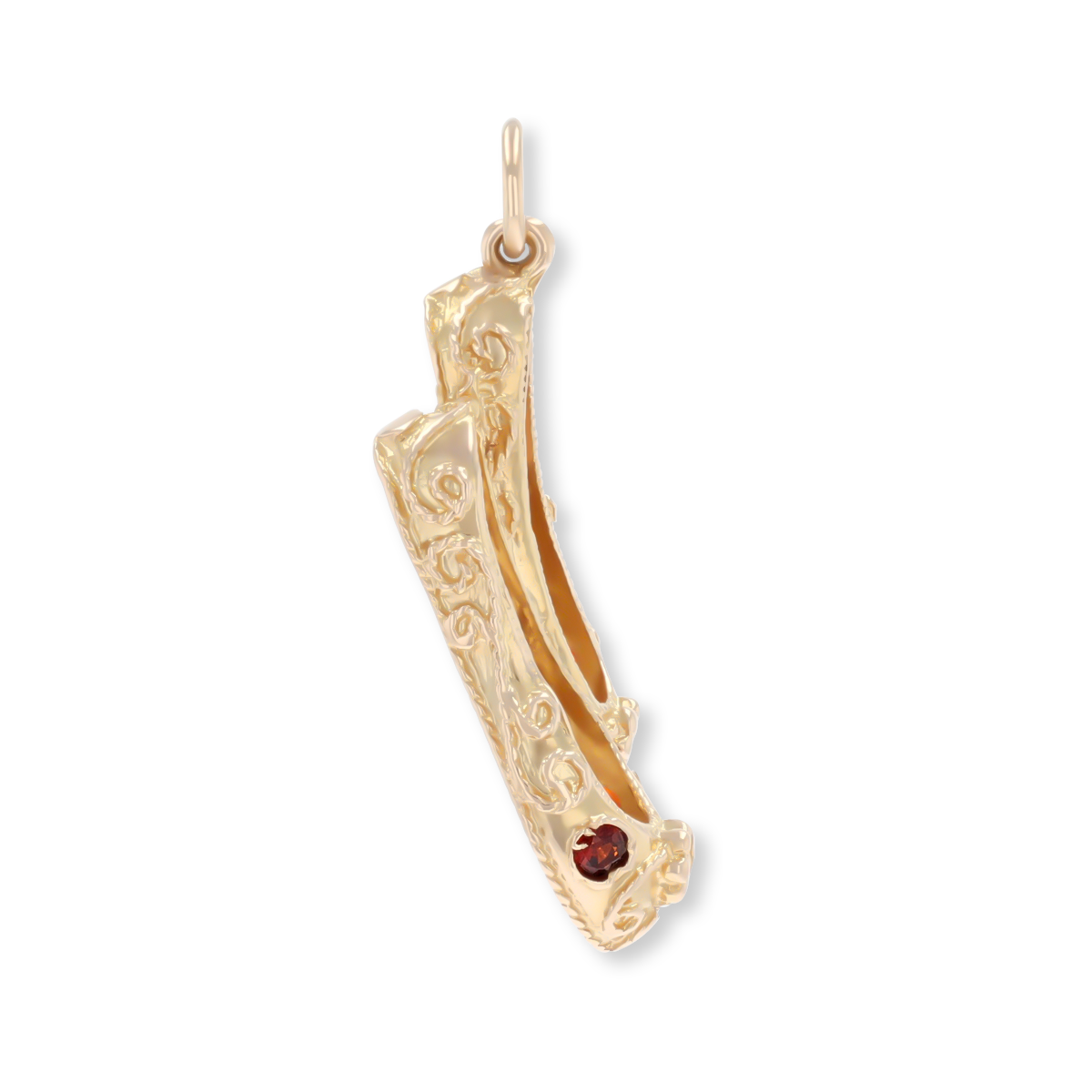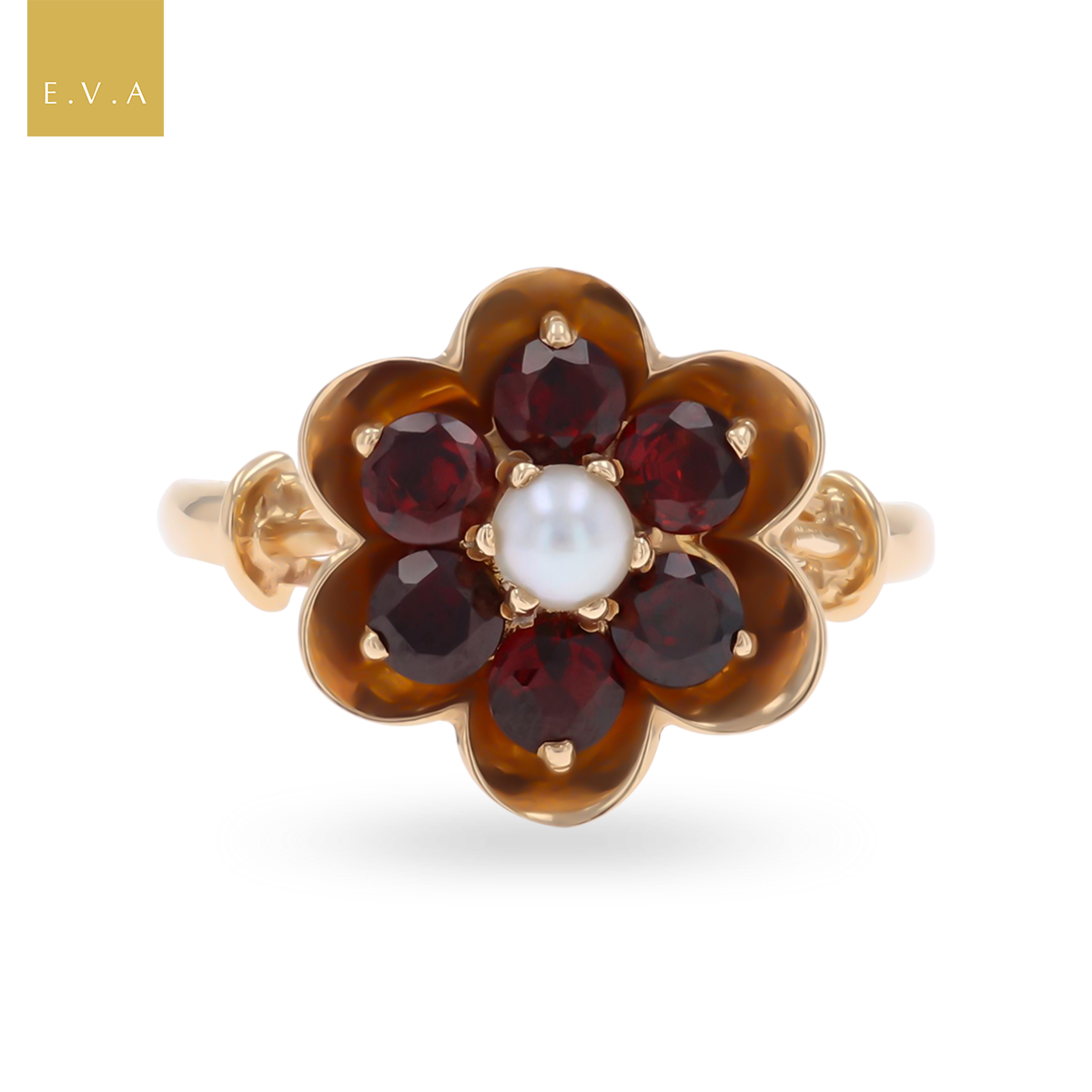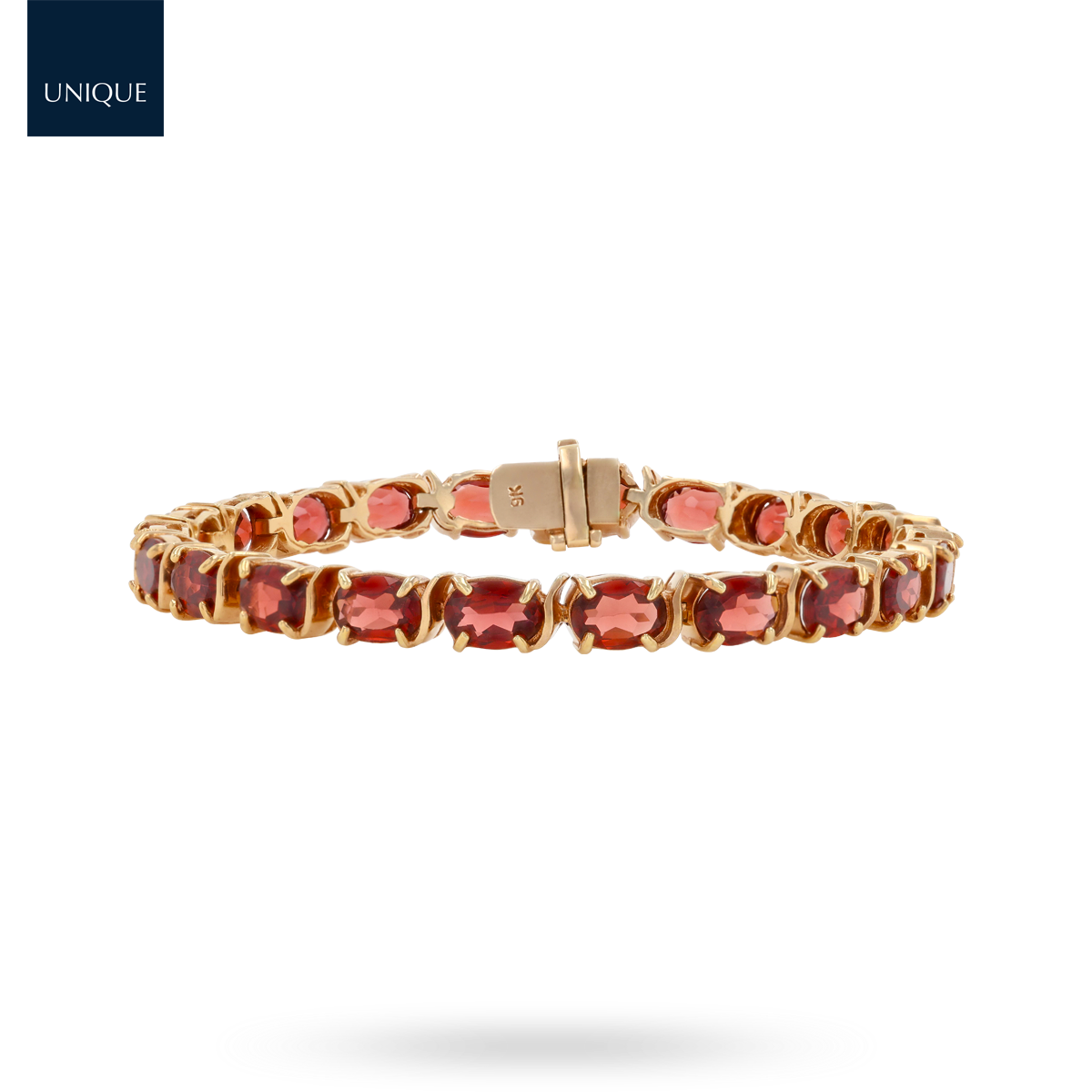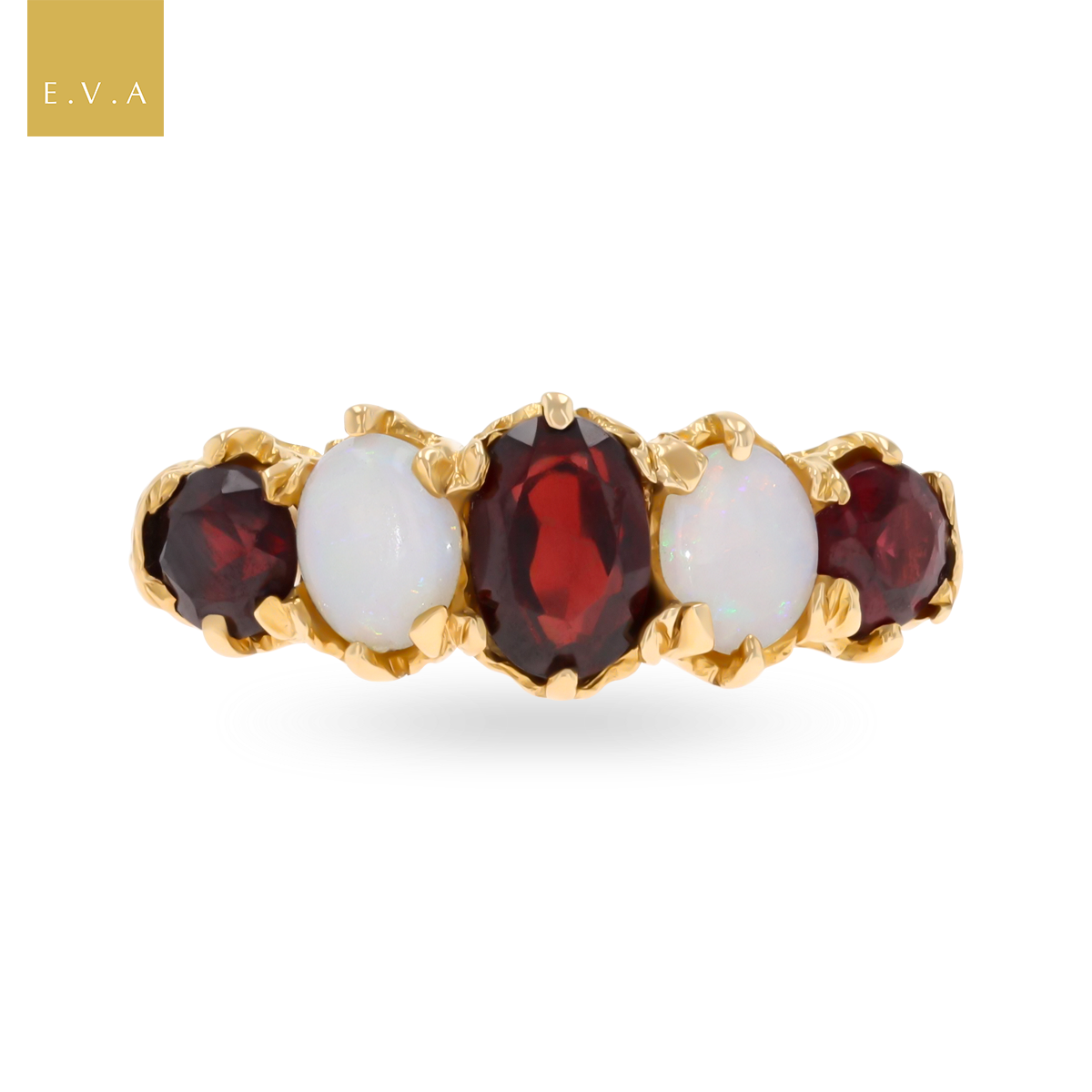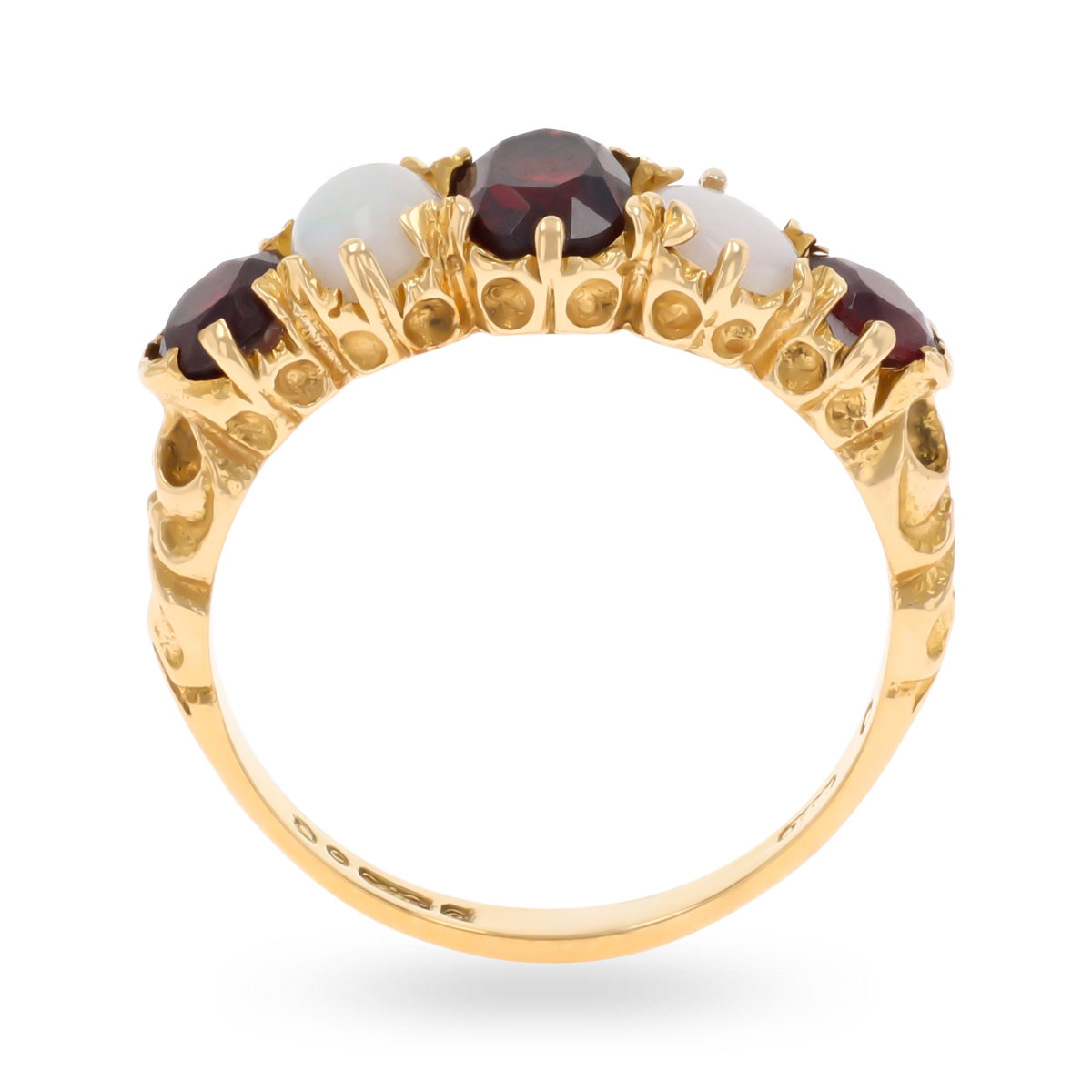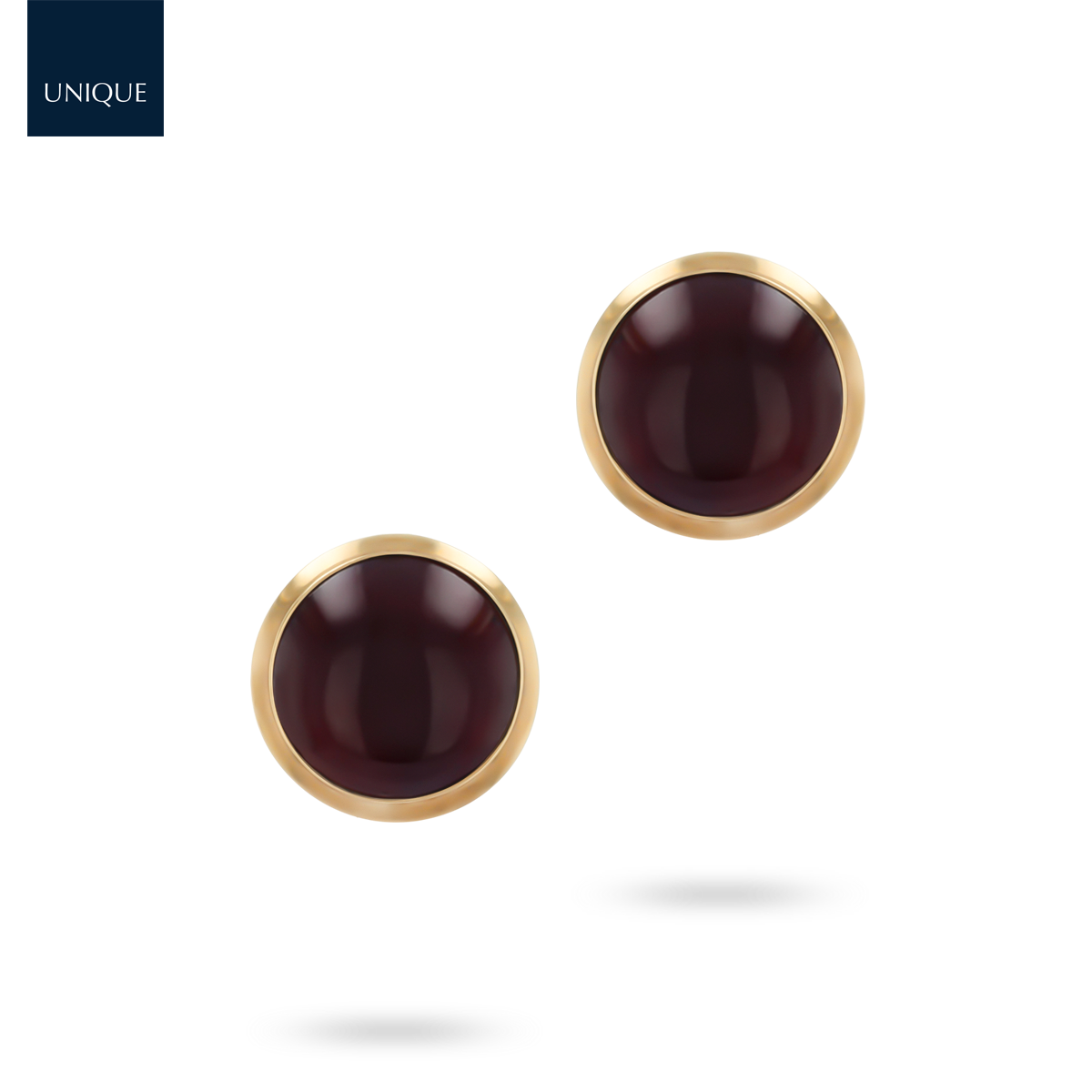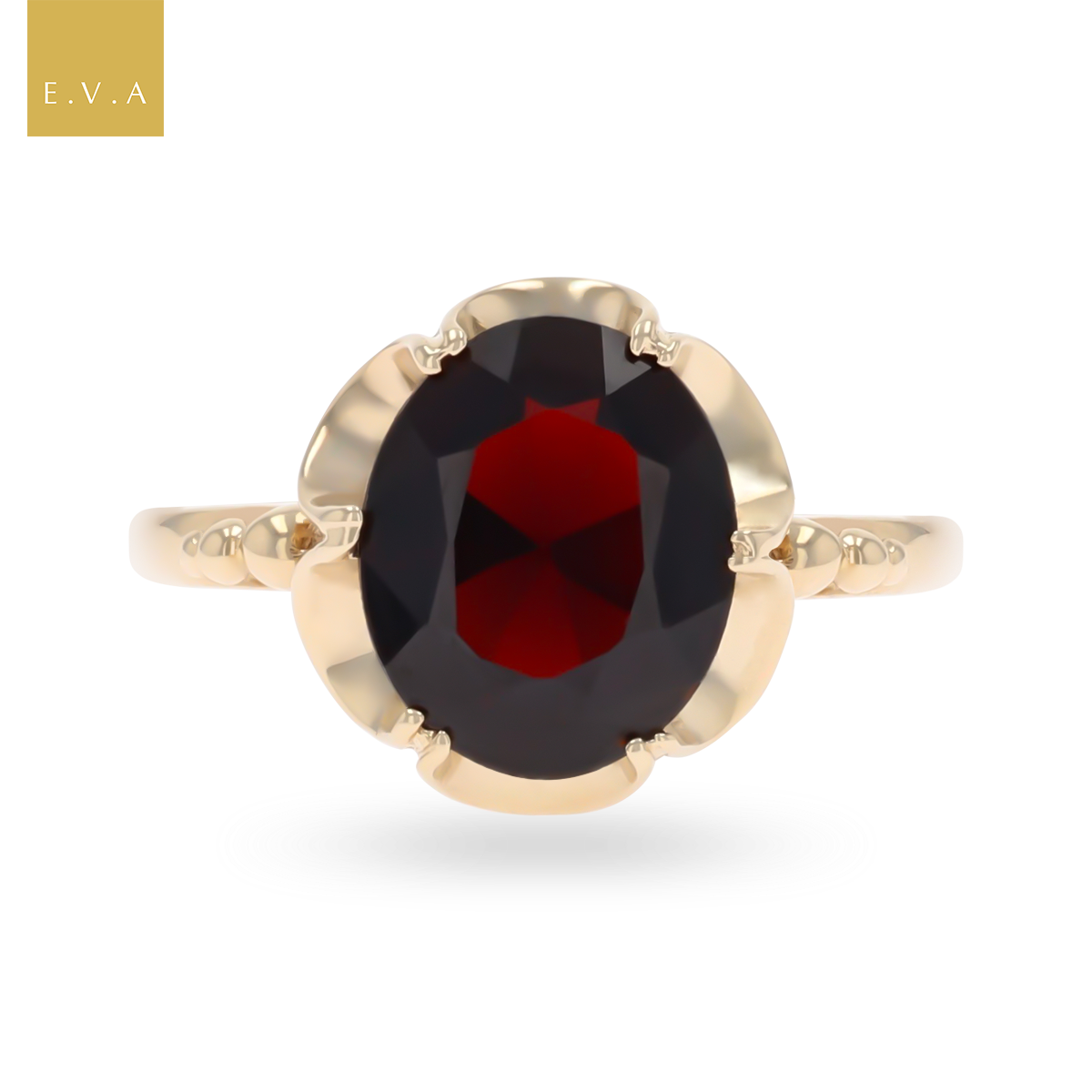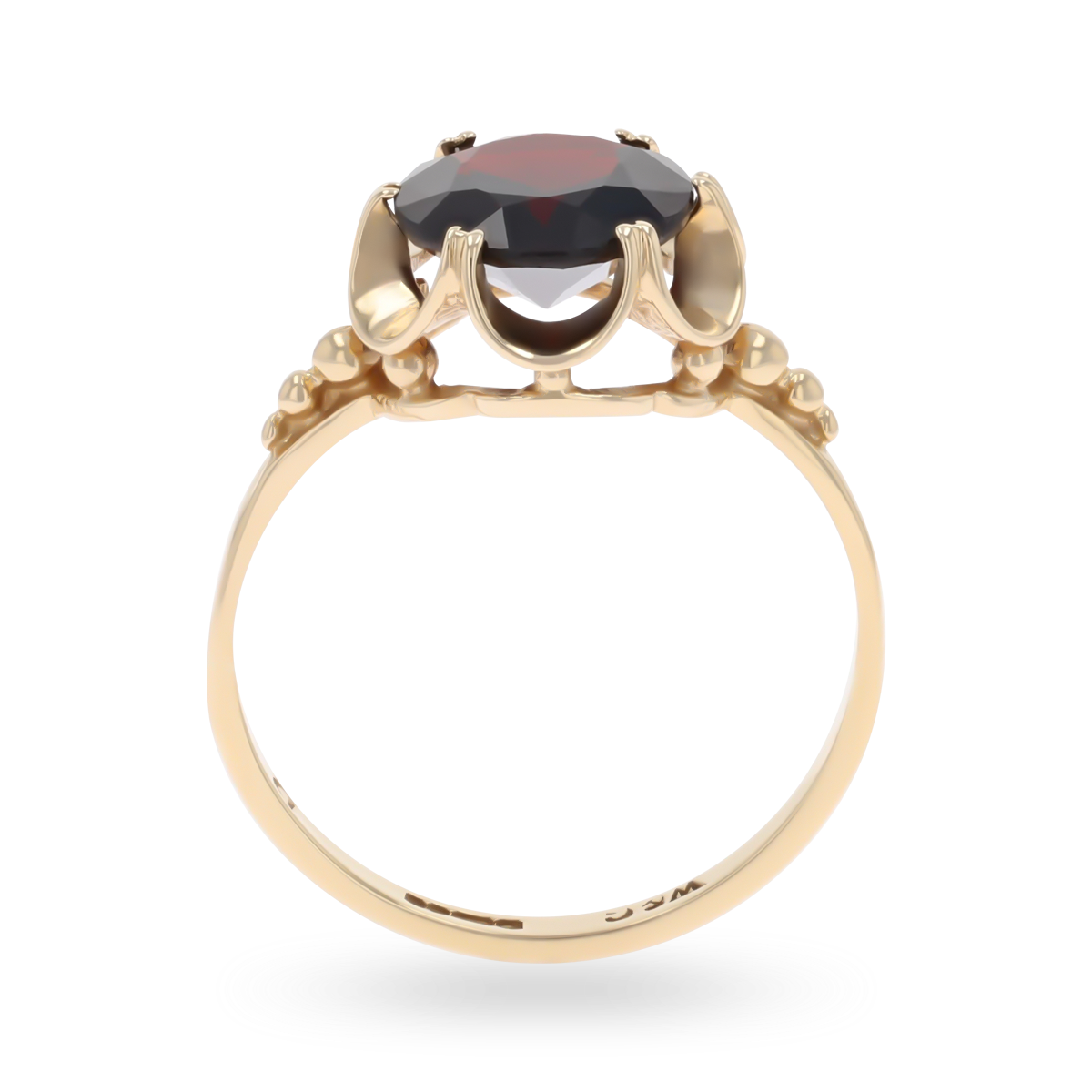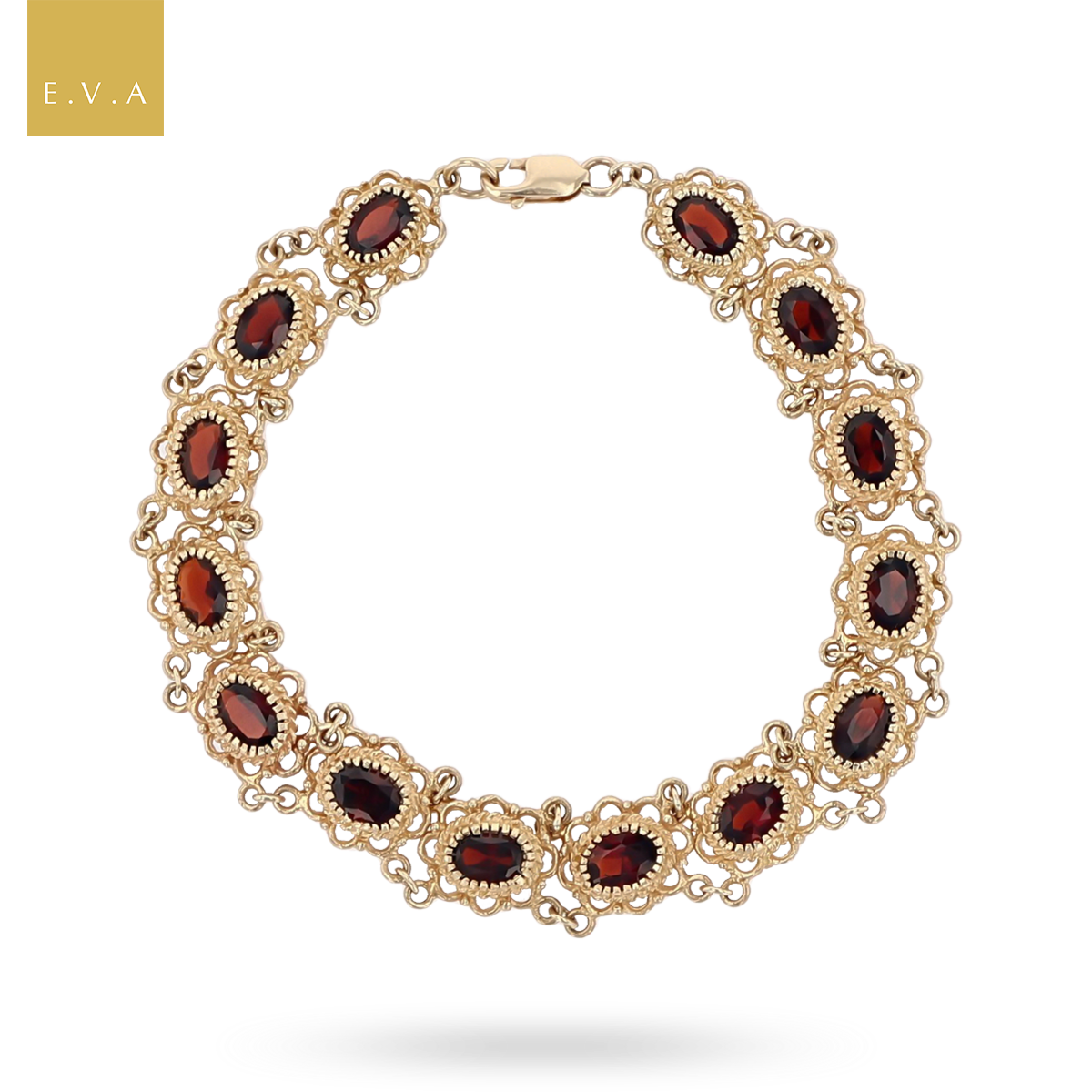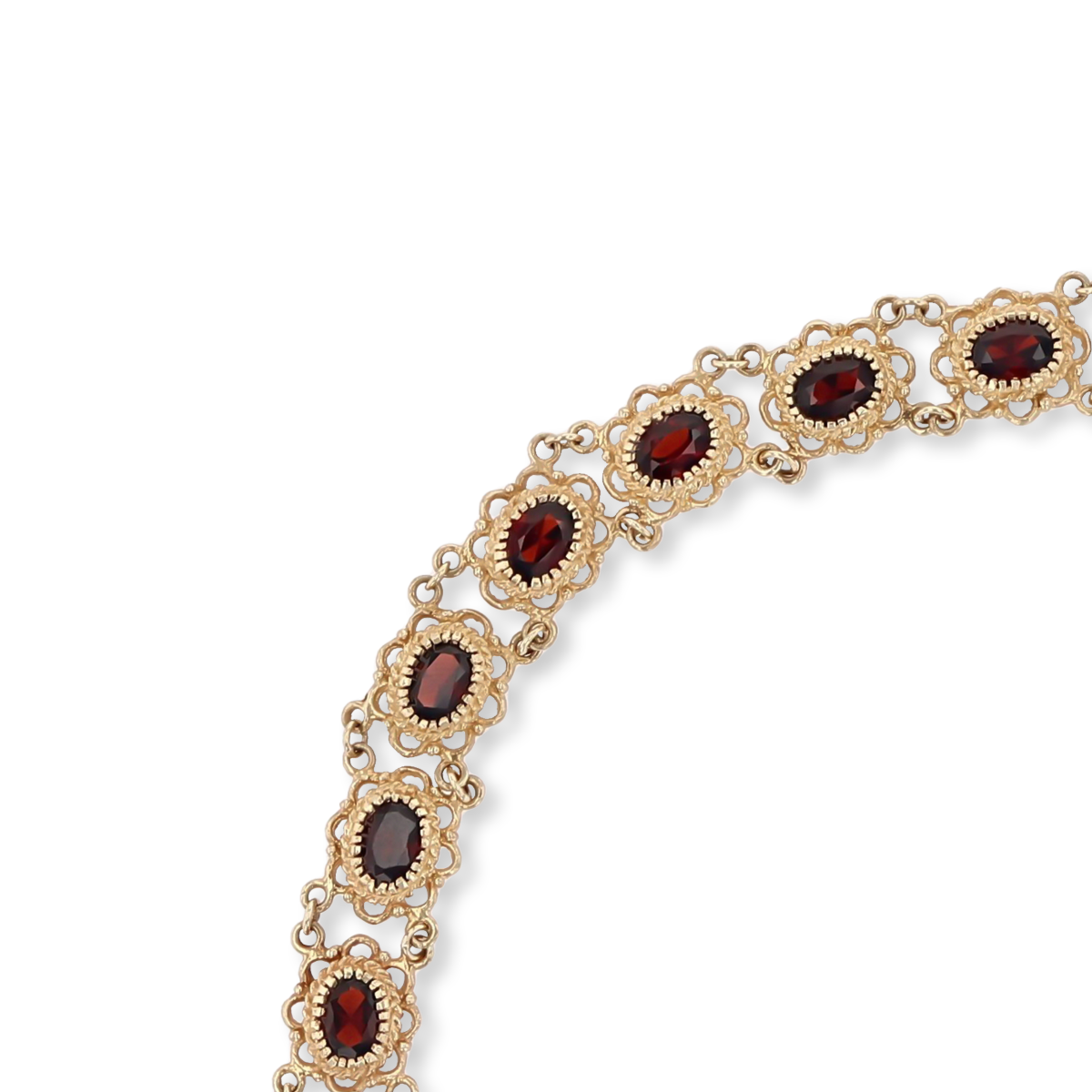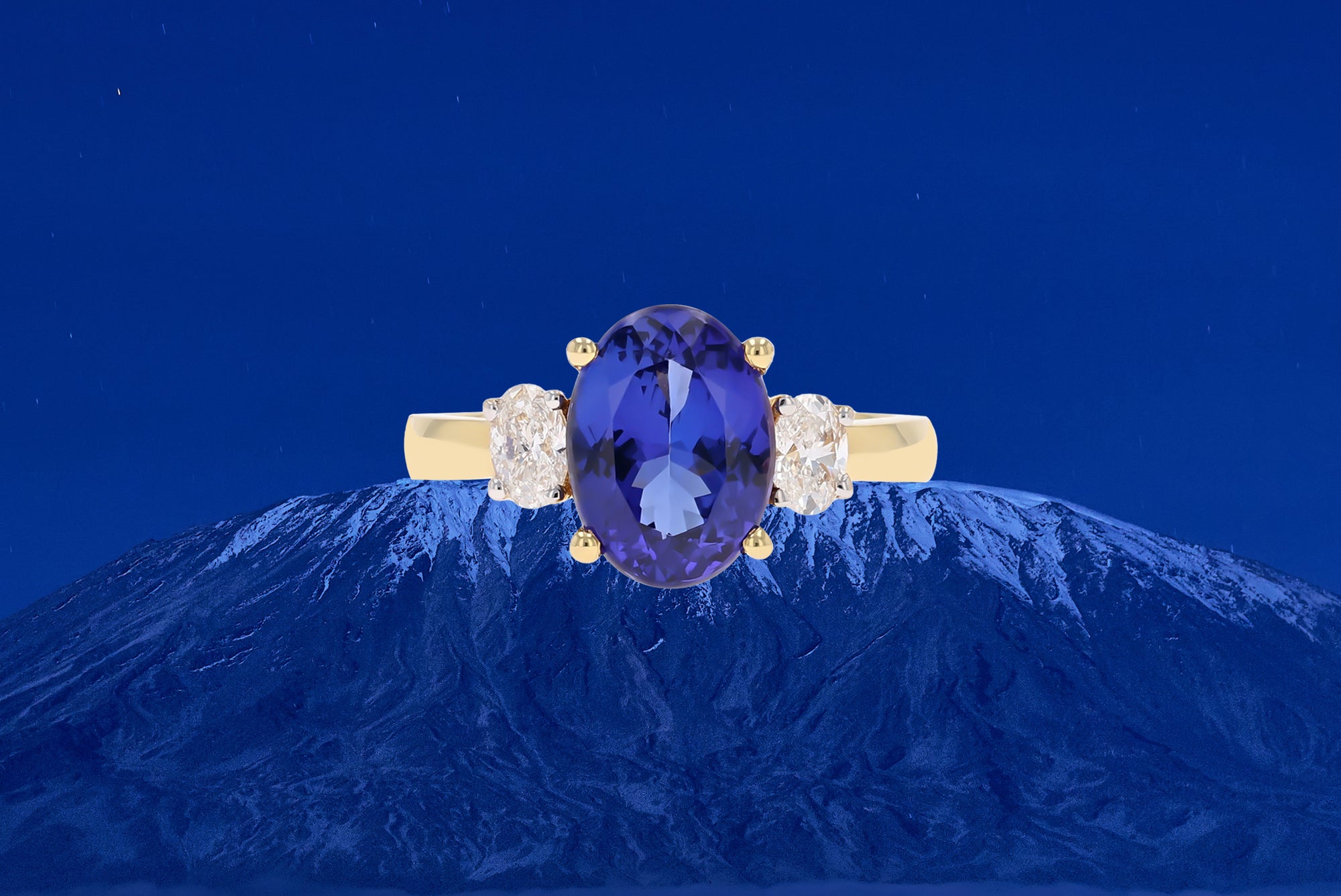The Gemstone of Vitality
What is Garnet?
Garnet, is the family name for a group of minerals, all connected by their form and chemical composition. This is formerly called an Isomorphous series. Garnets can be separated into two distinct groups: the pyralspite series and the ugrandite series. The pyralspite series; consists of Pyrope, Almandine and Spessartine Garnet, which all have the composition of (Metal) Aluminium Silicate, where one of metals may be Magnesium, Iron or Manganese. The ugrandite series; consists of grossular (Hessonite, Tsavorite and Hydrogrossular), andradite (Demantoid, Melanite and Topazolite) and uvarovite garnet, which all have the composition of Calcium (Metal) Silicate, where one of the metals may be Aluminium, Iron or Chromium.

15ct Yellow Gold Garnet & Seed Pearl Art Nouveau Necklace
Crystal Habit
The gemstone crystallises in metamorphic and igneous rock, which is classified under the cubic crystal system. Garnet crystals occurs as a rhombic dodecahedron (twelve-sided rhombus shaped faces) or icositetrahedron forms (twenty-four sided kite shaped faces). Sometimes a combination of both forms, can be seen in one crystal habit. Alternatively, garnet can be found as broken fragments or water worn pebbles in alluvial deposits.

(Left) Cabochon & Rose Cut Pyrope Garnet Grape Pendant. (Centre) Garnet Set Cross Pendant. (Right) Old Cut Garnet Bezel Set Heart & Grape Pendant.
Pyrope Garnet
Is composed of magnesium aluminium silicate. Exhibits a deep red to purplish-red hue, coloured by Iron (Fe) and Chromium (Cr). Depending on the saturation and intensity of colour, the gemstone ranges from transparent to translucent and reflects a bright vitreous lustre. Pyrope can be located from: South Africa, Sri Lanka, Russia and USA. Prior to the twentieth century, pyrope was sourced from Bohemia, which is currently part of Czech Republic and is referred to as "Bohemian Garnet". Pyrope under the 10x loupe, rarely exhibits inclusions and possesses a high clarity, although if present occur as needle-like crystals. In the 19th century, pyrope was popularly fashioned as a rose cut and set into Victorian jewels. Commonly mistaken for almandine garnet, ruby, red spinel, tourmaline, red artificial glass, garnet topped doublet (GTD).

9ct Yellow Gold Marquise Cut Rhodolite Garnet Bracelet
Almandine Garnet
Is composed of iron aluminium silicate. Displays a brownish red to purplish-red and pale mauve hue, coloured by Iron (Fe). Depending on the saturation and intensity of colour, the gemstone ranges from transparent to translucent and reflects a bright vitreous lustre. Almandine can be sourced and mined from: Brazil, India, Madagascar, Sri Lanka, Tanzania, USA & Zambia. Almandine under the 10x loupe, showcases a variety of magical inclusions from: multi-phase, rutile (needle-like crystals, oriented parallel to edges of a dodecahedron), rounded or irregular shaped crystals surrounded by stress-cracks. Commonly mistaken for pyrope garnet, ruby, red spinel, tourmaline, red artificial glass, garnet topped doublet (GTD).
Almandine can exhibit an optical effect know as Asterism, which is more commonly traded under the name “Star Garnets”. The reflection effect, relies on rutile inclusions being orientated in two or more different directions. The gemstone is then specifically cut en cabochon, whereby the inclusions are parallel to the base. Light is then reflected from each set of inclusions, exposing either a four-rayed or six-rayed star.
- Rhodolite Garnet: Is an intermediate between pyrope and almandine garnet. Displays a light purplish red hue, coloured by Iron (Fe) and Chromium (Cr).

9ct White Gold Spessartine Garnet Trilogy Ring
Spessartine Garnet
Is composed of manganese aluminium silicate. Reveals a yellowish orange to orangish red hue, coloured by Manganese (Mn). Depending on the saturation and intensity of colour, the gemstone ranges from transparent to translucent and reflects a bright vitreous lustre. Spessartine can be found in granite pegmatites from: Australia, Brazil, Madagascar, Myanmar (Burma), Namibia, Sri Lanka and USA. Spessartine under the 10x loupe, presents a unique shredded appearance of wavy feathers, consisting of liquid droplets. Commonly mistaken for hessonite garnet, fire opal, tourmaline and orange artificial glass.

Vintage Garnet & Paste Cluster Bracelet
Hessonite Garnet
Is composed of calcium aluminium silicate. Renders a brownish yellow to brownish red and reddish orange colour. Depending on the saturation and intensity of colour, the gemstone ranges from transparent to translucent and reflects a bright vitreous lustre. Hessonite can be obtained from metamorphosed limestone and gem gravels in: Brazil, Canada, Pakistan, Sri Lanka and Tanzania. Hessonite under the 10x loupe, unveils a multitude of rounded crystals and oily or swirly internal effects, creating a granular appearance. Commonly mistaken for spessartine garnet, citrine, tourmaline and orange artificial glass.

9ct Yellow Gold Garnet Set Ballet Slippers
Tsavorite Garnet
Is composed of calcium aluminium silicate. Exhibits a bluish green to yellowish green hue, coloured by Vanadium (V) and Chromium (Cr). Depending on the saturation and intensity of colour, the gemstone ranges from transparent to translucent and reflects a bright vitreous lustre. Tsavorite can be uncovered from metamorphic rocks in: Kenya, Madagascar, Pakistan, Tanzania and Zambia. Tsavorite under the 10x loupe, shows acicular (needle-like) to fibrous crystals and feathers. Commonly mistaken for emerald, tourmaline, peridot and green artificial glass.

18ct Yellow Gold Garnet Cabochon & Pearl Necklace
Hydrogrossular Garnet
Is composed of calcium aluminium silicate with water/hydroxyl. Displays a green (coloured by Chromium (Cr), pink, greyish white to brown colours. Depending on the saturation and intensity of colour, the gemstone ranges from translucent to opaque and reflects a bright vitreous lustre. Frequently fashioned into cabochons, beads and carvings. Hydrogrossular can be located in metamorphic rocks from: (Transvaal) South Africa, New Zealand and (Utah) USA. Hydrogrossular under the 10x loupe, reveals a fine-grained structure, sharply defined green patches and irregular shaped, opaque, black magnetite crystals. Commonly mistaken for jadeite and nephrite.

18ct White Gold Demantoid Garnet Solitaire Ring
Demantoid Garnet
Is composed of calcium iron silicate. Renders a bright green to yellowish green hue, coloured by Chromium (Cr). Depending on the saturation and intensity of colour, the gemstone ranges from transparent to translucent and reflects a sub-adamantine lustre. Demantoid exhibits a high level of dispersion, more commonly known as the magical phenomenon of fire and is greater than that seen in a Diamond. Demantoid under the 10x loupe, presents diagnostic inclusions, characteristic of certain localities. Demantoid from Namibia have circular stress fractures, whereas demantoid from Russia (Ural Mountains) displays radiating fibrous aggregates of an asbestos mineral, which are known as horsetail inclusions. Demantoid is a less durable stone compared to its other garnet counterparts, exhibiting a lower hardness of 6.5 and poor toughness. Therefore, it is unlikely to see this variety fashioned as large stones. Demantoid’s rarity, effervescent hue and the ability to display the optical effect of fire, makes it the most expensive variety of garnet. Commonly mistaken for peridot, green zircon and green artificial glass.

9ct Yellow Gold Victorian Style Garnet Bracelet
The Lore Of Garnet
Garnet is the material used to celebrate the 2nd wedding anniversary, as well as being the birthstone of January, it is also the zodiac birthstone of Capricorn. Garnet derives from the Latin word ‘garanatus’, which is translated to ‘seed-like’. The discovery of small red crystals bared a similar resemblance to pomegranate seeds. The ancient romans, carved the gemstone into cabochons, cameos and specifically intaglios, which adorned many signet rings and acted as a seal, to authorise important documents and contracts. Its is believed that Noah, suspended a large garnet on the ark, and used it as a lantern, to provide a safe passage through the flood. The gemstone has anciently been believed, to bring balance and harmony to the wearer.

9ct Yellow Gold Pearl & Garnet "Victorian" Style Ring
Care
Garnet: 💎 Hardness: 7.25 | 💪 Toughness: Good | ⚖️ Stability: Good
♥️ Extreme Caution, ⚠️ Avoid: ☀️🔥 Heat, 🔥❄️ Thermal Shock / Extreme Temperature Change, 🔊 Ultrasonic, 🌪 Steam Cleaners.
💛 Mild Caution, ⚠️ Avoid: 🔨 Knocks, 💧 Porosity.
🔬Gemmological Observation: Clean with mild soapy water and dry with a soft cloth. Garnets are usually a very durable gemstone. Some stones are prone to damage due to thermal shock. Do not expose them to extreme temperature changes.

Explore our Wordfinder, A Glossary of Terms, to discover the meaning behind unknown names, terms or phrases - used in this article.
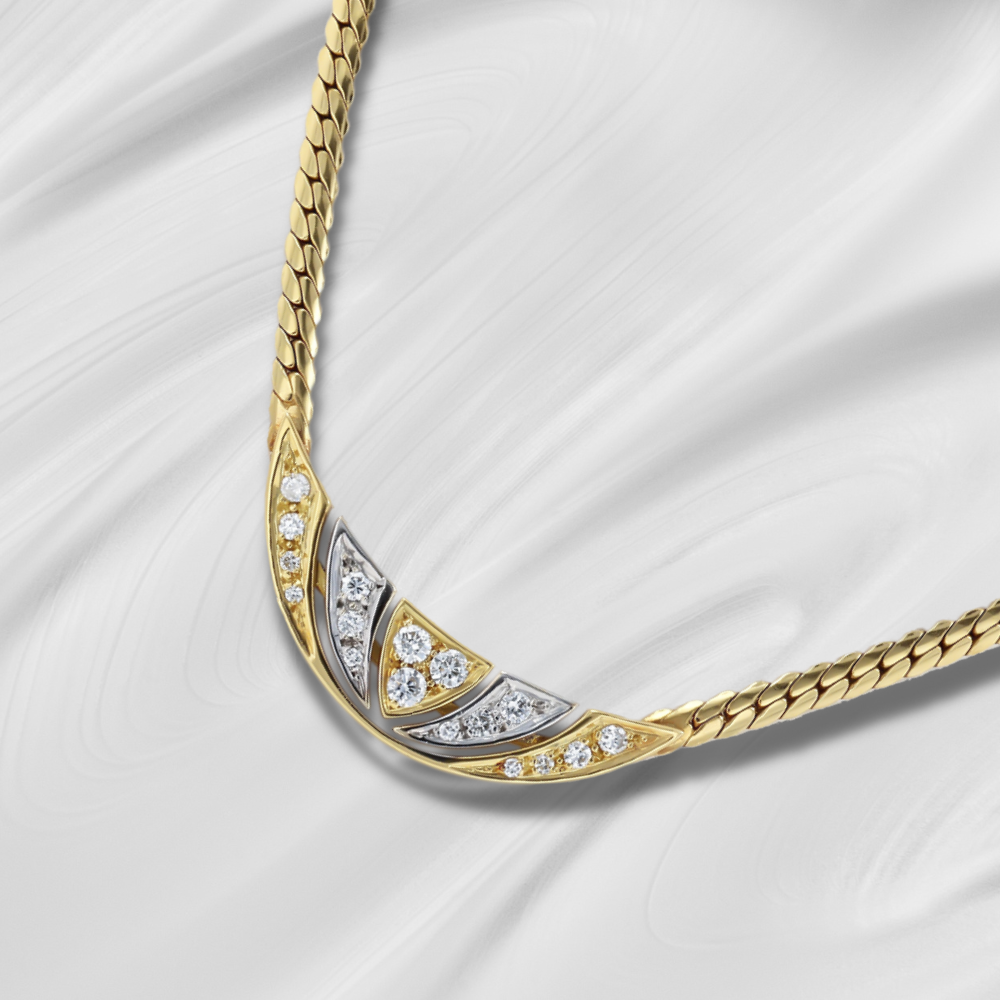

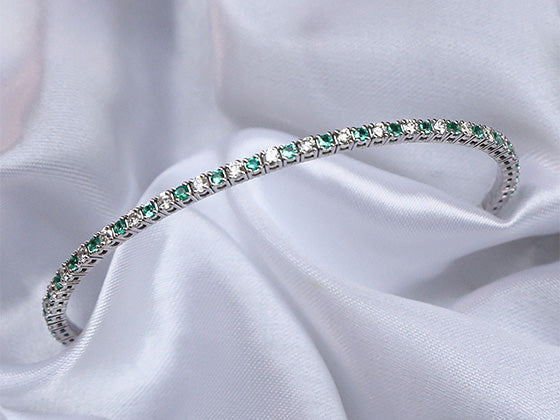

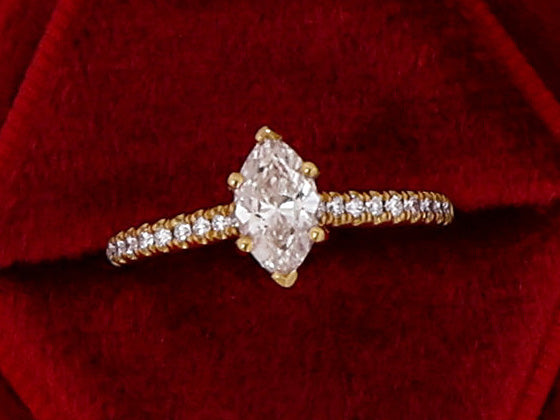
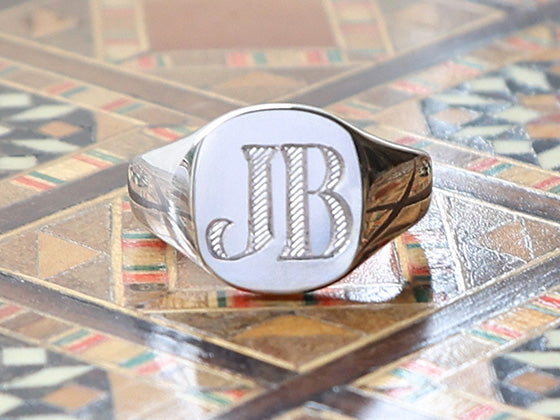
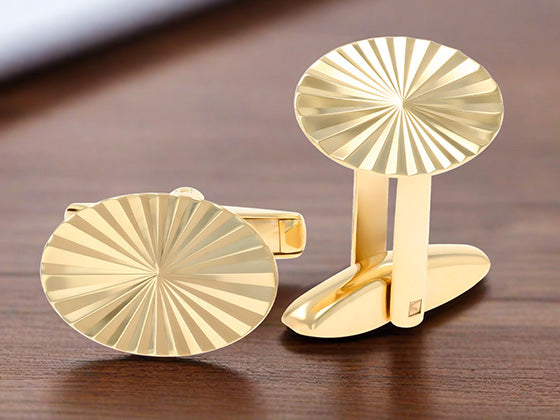
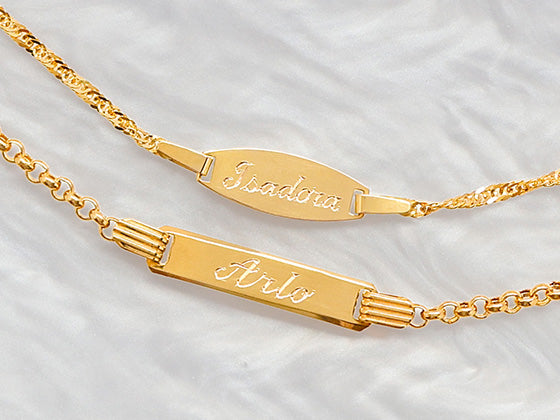
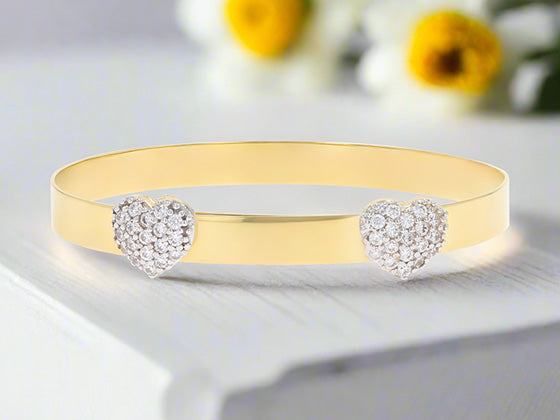
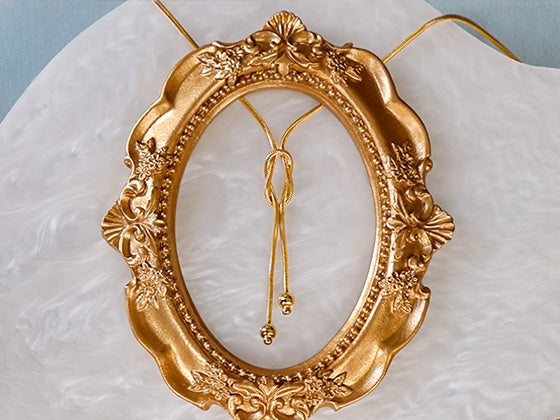
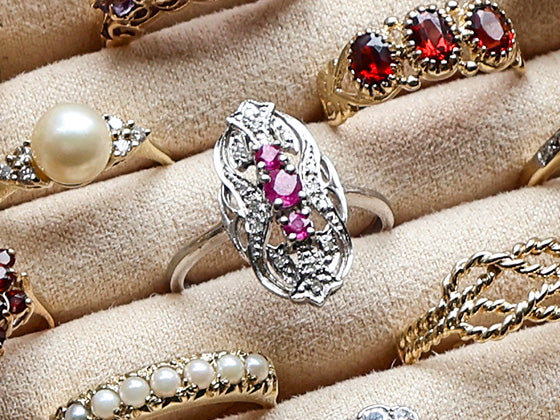
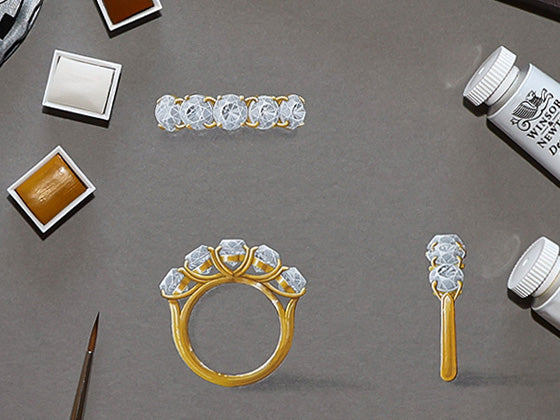

 Contact Us
Contact Us
